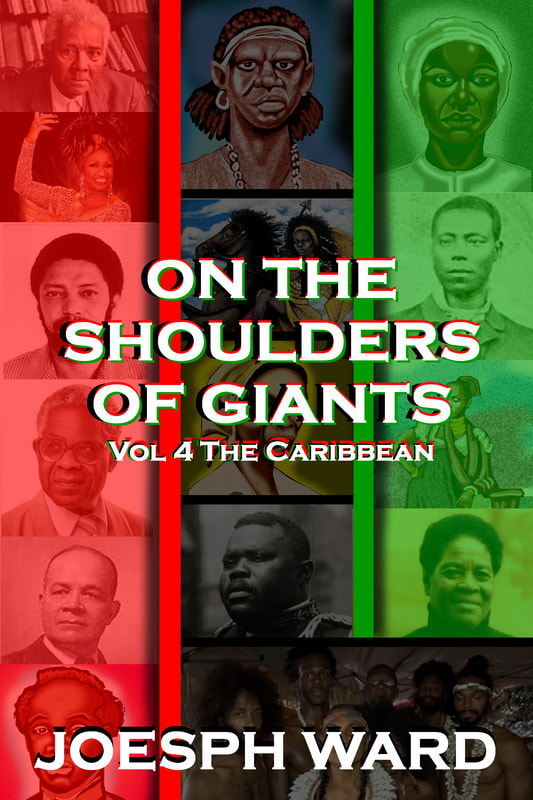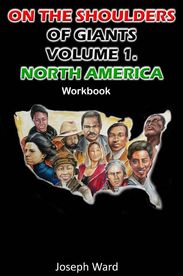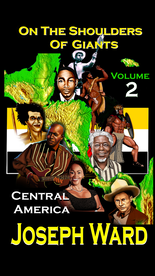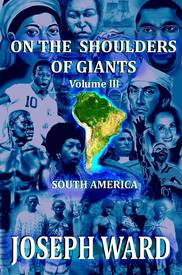|
The lynching of Laura and L.D. Nelson on May 25, 1911, near Okemah, Okfuskee County, Oklahoma, stands as a sad chapter in American history, underscoring the pervasive racial violence and injustice faced by African Americans in the early 20th century. This tragic event not only exemplifies the brutal treatment of African Americans but also highlights the systemic failures of the judicial system during that era. During the early 1900s, the United States, particularly the Southern states, witnessed rampant racial violence against African Americans. The legacy of slavery, combined with the rise of Jim Crow laws, created an environment where African Americans were systematically oppressed and denied basic civil rights. Lynching, a form of extrajudicial punishment, became a widespread tool of terror used by white mobs to enforce racial hierarchy and suppress African American communities. On May 25, 1911, Laura Nelson and her teenage son, L.D. Nelson were lynched by a mob of white men near Okemah, Oklahoma. The events leading to their lynching began when Deputy Sheriff George H. Loney of the Okfuskee County Sheriff's Office was eliminated during a search of the Nelson family's farm. The search was conducted concerning a stolen cow. This led to L.D. being accused of eliminating Deputy Loney, and Laura Nelson was charged with deletion for allegedly grabbing the weapon first. Laura and L.D. Nelson were arrested and detained in the Okemah jail after the incident. Reports indicate that their detention was marked by a lack of legal representation and a fair trial, reflecting the broader racial prejudices of the time. The local white community quickly accepted the accusations against them, and little effort was made to ensure a thorough and unbiased investigation. On the night of May 24, 1911, a mob of approximately 40 white men stormed the jail where Laura and L.D. Nelson were held. The mob overpowered the sheriff and his deputies, who offered no significant resistance. Laura and L.D. were forcibly taken from their cells and driven to a bridge over the North Canadian River, about a mile outside of Okemah. The mob hanged Laura and L.D. Nelson from the bridge, and their bodies were left hanging for several hours. Photographs of the lynching were taken and subsequently distributed as postcards, a common practice during this era that further dehumanized the victims and glorified the violence. The lynching of Laura and L.D. Nelson was widely reported in newspapers across the United States, drawing attention to the brutality of lynching and the racial injustices prevalent in the country. Despite the publicity, no members of the lynch mob were ever prosecuted or held accountable for the hangings, highlighting the failure of the legal system to protect African American citizens and deliver justice. The incident contributed to the growing awareness and condemnation of lynching, eventually leading to the formation of anti-lynching organizations and movements. These efforts, spearheaded by groups such as the NAACP, sought to bring an end to lynching and promote civil rights for African Americans. The lynching of Laura and L.D. Nelson remains a poignant reminder of the racial violence and systemic injustice that plagued the United States in the early 20th century. It underscores the urgent need for historical reckoning and the continuous struggle for racial equality and justice. Remembering and acknowledging such tragedies is crucial in understanding the deep-rooted issues of racism and working towards a more just and equitable society.
0 Comments
The institution of marriage is a foundational pillar of human society, representing a formalization of partnership and a cornerstone of familial structure. However, during the era of American slavery, the concept of marriage among enslaved African Americans existed within a paradoxical and oppressive framework. Despite the legal prohibition of marriage for slaves and the constant threat of familial separation, the act of marriage held profound significance for the enslaved, providing a sense of stability, community, and identity in an otherwise dehumanizing and unstable world. Under the laws of slavery, enslaved people were considered property rather than human beings with legal rights. As such, they were denied the legal recognition of marriage. Slave codes across Southern states explicitly forbade slaves from entering into legally binding marriages. This prohibition was rooted in the economic interests of slaveholders, who viewed the enslaved population primarily through the lens of labor and property. Allowing legal marriages would confer a form of human dignity and autonomy that directly contradicted the foundational principles of slavery. Moreover, slaveholders frequently disrupted enslaved families by selling off individual members to different owners, often with no regard for familial bonds. The constant threat of separation loomed over slave marriages, making any form of long-term family stability extremely precarious. Enslaved people had no legal recourse to prevent such separations or to reunite with family members. Despite these formidable obstacles, marriage among enslaved people emerged as a crucial institution with deep emotional and social significance. The act of forming a marital union served several essential functions: 1. **Assertion of Humanity and Identity:** By choosing to marry and form family units, enslaved people asserted their humanity and resisted the dehumanizing nature of slavery. Marriage was a declaration of their identity as individuals capable of love, commitment, and social bonds. 2. **Social and Emotional Support:** Marriages provided a network of emotional and social support that was vital for survival in the harsh conditions of slavery. Spouses relied on each other for comfort, solidarity, and practical assistance, helping to alleviate the burdens of their daily lives. 3. **Cultural Continuity:** Through marriage and family life, enslaved people were able to preserve and transmit cultural traditions, values, and knowledge. This continuity was essential for maintaining a sense of heritage and community cohesion. 4. **Resistance to Oppression:** Marriage among slaves can also be viewed as an act of resistance. By forming and maintaining families, enslaved people challenged the slaveholders' attempts to reduce them to mere property. This resistance was both a private assertion of dignity and a subtle form of defiance against the institution of slavery. In the absence of legal recognition, enslaved people developed their customs and rituals to solemnize their unions. "Jumping the broom" is one of the most well-known practices, where couples would jump over a broomstick to signify their commitment. Religion often played a significant role in the marriages of enslaved people. Christian teachings were sometimes employed to justify the institution of slavery. Still, for many enslaved Africans, Christianity also offered a framework for understanding their suffering and a hope for eventual deliverance. Church gatherings, whether sanctioned by slaveholders or held secretly, often served as venues for marriages. The religious context imbued these unions with a sense of sacredness and divine sanction, further solidifying the bonds between spouses. The legacy of slave marriages is a testament to the resilience and agency of African Americans under the oppressive institution of slavery. These marriages laid the groundwork for the black family structures that emerged during Reconstruction and beyond, forming the bedrock of African American communities in the post-emancipation era. Despite the lack of legal recognition and the threat of separation, the endurance of these marital bonds underscores the profound human desire for connection, love, and family. In conclusion, the history of black marriages during American slavery reveals a complex interplay of oppression and resistance, dehumanization, and humanity. The legal prohibition of slave marriages did not extinguish the desire of enslaved people to form meaningful, lasting unions. Instead, marriage among the enslaved became a powerful symbol of resilience, offering a semblance of stability, identity, and community amidst the brutal realities of slavery. Though often fraught with challenges and risks, these marriages were a testament to the enduring spirit of those who sought to reclaim their humanity and assert their right to love and family, even in the face of relentless adversity. John Brown's raid on Harpers Ferry, Virginia, in October 1859, stands as a pivotal event in American history, marking a significant escalation in the tensions that would soon erupt into the Civil War. Brown, an ardent abolitionist, believed that slavery was a moral blight on the nation and that violent action was necessary to end it. His plan to incite a slave rebellion by seizing the federal arsenal at Harpers Ferry, however, was both audacious and tragic in its consequences. John Brown was born on May 9, 1800, in Torrington, Connecticut. Raised in a deeply religious family, he developed a strong opposition to slavery from a young age. By the 1850s, Brown had become increasingly militant in his abolitionist views. The Kansas-Nebraska Act of 1854, which allowed new territories to decide the issue of slavery by popular sovereignty, led to violent confrontations known as "Bleeding Kansas." Brown moved to Kansas and participated in these conflicts, notably the Pottawatomie Massacre in 1856, where he and his followers killed five pro-slavery settlers. Brown's experiences in Kansas convinced him that slavery would only be abolished through force. He began formulating a plan to incite a large-scale slave uprising. The target of his plan was the federal arsenal at Harpers Ferry, which housed a vast supply of weapons that he intended to distribute to enslaved people. On the night of October 16, 1859, Brown and a small band of 21 men, including his sons, set out to capture the arsenal. His group was racially diverse, comprising 16 white men, three free Black men (Dangerfield Newby, Lewis Leary, and John Copeland), one freed slave (Osborne Perry Anderson), and one fugitive slave (Shields Green). Their approach was methodical: they cut telegraph wires to prevent communication, captured the watchmen, and swiftly took control of the armory. Initially, the raid proceeded without much resistance. Brown's men successfully seized the armory and captured several hostages, including Colonel Lewis Washington, a great-grandnephew of George Washington. Brown believed that enslaved people in the surrounding area would join his cause once they heard of the raid. Still, this anticipated mass uprising did not occur. Instead, local farmers and militia quickly mobilized to counter the raid. By the morning of October 17, the town was under siege. Brown and his men were trapped inside the armory engine house. The militia cut off their escape routes, and a firefight ensued. During the day, several of Brown's men were killed, including Dangerfield Newby, who had joined the raid in hopes of liberating his wife and children from slavery. The federal government swiftly responded to the crisis. President James Buchanan dispatched a contingent of U.S. Marines, led by Colonel Robert E. Lee and accompanied by Lieutenant J.E.B. Stuart. By the morning of October 18, Lee's forces had surrounded Brown's position. Tuesday, October 18th, 1859, Stuart approached the engine house under a white flag, demanding Brown's surrender. Brown refused, believing that negotiations would lead to more time for reinforcements. Consequently, Lee ordered an assault. The Marines, using sledgehammers and a makeshift battering ram, broke through the doors. In the ensuing melee, several of Brown's men were killed or captured. Brown himself was wounded and taken prisoner. The raid resulted in the deaths of ten of Brown's men, including two of his sons, and the capture of seven others. Five managed to escape, though they were later apprehended or killed. John Brown was quickly brought to trial in nearby Charles Town, Virginia. He was charged with treason against the Commonwealth of Virginia, murder, and inciting a slave insurrection. The trial, presided over by Judge Richard Parker, began on October 27, 1859. Despite a spirited defense by his attorneys, Brown was found guilty on all counts. On November 2, he was sentenced to death. Brown's demeanor during the trial and his eloquent speeches won him sympathy in the North, where many began to see him as a martyr for the abolitionist cause. Ralph Waldo Emerson famously compared him to Christ, while Henry David Thoreau praised his moral courage. John Brown was hanged on December 2, 1859. His final written words, "I, John Brown, am now quite certain that the crimes of this guilty land will never be purged away but with blood," proved prophetic. His raid, though a military failure, intensified the national debate over slavery and set the stage for the Civil War. John Brown's raid on Harpers Ferry was a turning point in American history. It galvanized abolitionists and struck fear into the hearts of slaveholders. The South reacted with outrage and a growing sense of encirclement, which contributed to the secessionist movement. The North, while divided on Brown's methods, increasingly viewed slavery as an irreconcilable moral issue. Brown's raid and subsequent execution polarized the nation and underscored the deep divisions that would soon lead to civil war. His willingness to die for the cause of freedom left an indelible mark on American history, and his legacy as a radical abolitionist continues to provoke debate and reflection on the complexities of moral action and the fight for justice. Ta-Seti is an Ancient Kemetian or Egyptian term meaning Land of the Bow. This term was used to reference Ancient Nubia in antiquity for thousands of years. The term was given to Ancient Nubia because their warrior specialized in crafting and using bows. Nubian Bowmen appear in rock art dating back to the Neolithic Period. Largely known throughout most of their history for being hunters when the Nubians started trading with other groups their most valuable resources came from the hunt (animal skins and ivory). The Ta-Seti people covered a stretch of land that covered what is now Southern Egypt and Northern Sudan. This is the oldest known name for the Nubian People and they predate the founding of Ancient Egypt. One of the first groupings of people that could be called a civilization, the Nubians of this land developed, as most all early civilizations in the world did, around a major river; The Nile. The Egyptian civilization eventually conquered them, but it managed to maintain their cultural identity and uniqueness. Even in Egyptian text the strength and skill of the Nubian archers is given great praise and importance by military leaders and pharaohs. Being able to maintain their culture and largely influence Egyptian culture would eventually cause them to win their independence from Egypt, becoming their own nation, ultimately conquering Egypt. Points on the Ta-Seti
Carthage, a powerful city-state in modern-day Tunisia, was founded by Phoenician settlers from Tyre around 814 BCE. According to legend, Queen Dido (or Elissa) led these settlers to North Africa after fleeing from her brother, Pygmalion, the king of Tyre. The Phoenicians, renowned for their seafaring skills and trading prowess, chose the site for its strategic position on the Mediterranean, which allowed them to control maritime trade routes and expand their influence across the region. Carthage grew rapidly thanks to its advantageous location and the entrepreneurial spirit of its people. The city established numerous colonies and trading posts throughout the western Mediterranean, extending its influence over large parts of North Africa, southern Spain, Sardinia, Corsica, and parts of Sicily. This network of settlements and trade routes allowed Carthage to amass immense wealth and become a dominant power in the Mediterranean. The people of Carthage were of Phoenician descent, and they spoke a Semitic language known as Punic, closely related to Hebrew and Aramaic. Carthaginian culture retained many elements of its Phoenician heritage, including religion, art, and social customs. The Carthaginians worshipped a pantheon of gods, with Baal Hammon and Tanit being among the most prominent deities. Religious practices included sacrifices and elaborate rituals conducted in large temples and sanctuaries. Carthaginian society was highly stratified, with a ruling elite of wealthy merchants and landowners at the top, followed by a middle class of artisans and traders, and a lower class of laborers and slaves. The government was an oligarchy, dominated by powerful families who controlled the political and economic life of the city. A council of elders, known as the "Council of Hundred," and two annually elected suffetes (judges) administered the state. The Carthaginians were renowned for their skills in navigation and shipbuilding, which enabled them to maintain a powerful navy. This maritime dominance was crucial for protecting their trade interests and projecting their power across the Mediterranean. The history of Carthage is inextricably linked to its protracted and bitter conflict with Rome, known as the Punic Wars. These wars were a series of three conflicts fought between 264 and 146 BCE, which ultimately determined the fate of Carthage. The First Punic War (264-241 BCE) began over control of Sicily and ended with a Roman victory. Carthage was forced to cede Sicily to Rome and pay a substantial indemnity. The loss of Sicily marked the beginning of Carthage's decline, but it did not extinguish its ambitions. The Second Punic War (218-201 BCE) is the most famous of the three, largely due to the military genius of the Carthaginian general Hannibal Barca. Hannibal, determined to avenge Carthage's earlier defeat, embarked on an audacious campaign against Rome. He famously crossed the Alps with a diverse army, including war elephants, to invade Italy from the north. Hannibal won several significant battles, including the Battle of Cannae in 216 BCE, where he inflicted a devastating defeat on the Roman legions. Despite his successes on the battlefield, Hannibal could not secure a decisive victory or adequate support from Carthage. Rome's strategic resilience and its ability to muster resources eventually turned the tide. The Roman general Scipio Africanus carried the war to North Africa and defeated Hannibal at the Battle of Zama in 202 BCE. This defeat forced Carthage to sue for peace, resulting in the loss of its overseas territories and a crippling the empire. The Third Punic War (149-146 BCE) was a punitive expedition by Rome to eliminate Carthage as a threat once and for all. Carthage was besieged, captured, and destroyed despite a valiant resistance in 146 BCE. The surviving inhabitants were sold into slavery, and the city was razed, ending Carthage's existence as a political entity. The Carthaginians left an indelible mark on the Mediterranean through their contributions to trade, navigation, and urban development. The conflict with Rome, particularly the epic struggle led by Hannibal, has been immortalized in history as one of the greatest rivalries of the ancient world. The ruins of Carthage, now a UNESCO World Heritage site, stand as a reminder of a once-great civilization that played a crucial role in shaping the history of the Mediterranean. The story of Carthage, from its rise as a Phoenician colony to its fall at the hands of Rome, continues to captivate historians and enthusiasts, offering valuable insights into the complexities of ancient geopolitics, culture, and warfare. The Aba Women's Riots of 1929, also known as the Women's War, was a significant anti-colonial revolt that occurred in southeastern Nigeria. This event is notable for its scale, organization, and role of women in challenging British colonial policies. In the late 1920s, Nigeria was under British colonial rule, and the southeastern region, comprising the Igbo and other ethnic groups, was administered indirectly through local chiefs appointed or recognized by the colonial authorities. The colonial administration implemented several policies that disrupted traditional governance structures and imposed new forms of economic exploitation. One of the key grievances that led to the Aba Women's Riots was the introduction of new taxation policies. The British authorities, seeking to increase revenue, decided to extend direct taxation to the indigenous populations, which included taxing the incomes and properties of men and potentially introducing taxes on women. This move was seen as deeply intrusive and unjust, especially in a society where women's economic activities were vital to the household and community economies. The immediate cause of the riots was a rumor in November 1929 that the British colonial government intended to impose a tax on women. This rumor sparked widespread anger and mobilization among the women of the Owerri Province. The women, led by influential leaders, organized themselves into large groups and began a series of protests. They employed traditional methods of resistance such as "sitting on a man," a form of protest where women would gather at the house of a man (or an official) they were dissatisfied with, singing and dancing, often in a mocking or satirical manner, until their demands were met. The protests escalated into what became known as the Women's War. Thousands of women participated in these demonstrations, which included attacks on colonial administrative buildings, the release of prisoners, and the destruction of warrant chiefs' homes and property. The warrant chiefs were seen as collaborators with the British and symbols of the oppressive colonial system. The women utilized their traditional networks and communication systems to coordinate their actions across a vast region, demonstrating high levels of organization and solidarity. They demanded the removal of the warrant chiefs and the end of the planned taxation. The British colonial administration was initially taken aback by the scale and intensity of the protests. The response from the authorities was swift and brutal. The colonial government deployed police and military forces to suppress the riots. The use of force resulted in significant violence, and by the end of the uprising, it was estimated that about 50 women were killed, and many more were injured. The Aba Women's Riots had a profound impact on the colonial administration in Nigeria. The protests forced the British to re-evaluate their policies. While the immediate taxation plans were suspended, the event also led to a reassessment of the indirect rule system and the role of women in the colonial economy. In the long term, the Women's War is remembered as a critical episode in Nigeria's anti-colonial history. It highlighted the crucial role of women in resistance movements and challenged the colonial narrative that underestimated their political agency. The riots also underscored the broader discontent with colonial rule and contributed to the growing momentum for independence, which Nigeria eventually achieved in 1960. The Aba Women's Riots remain a powerful symbol of collective action and resistance, and they are commemorated in Nigerian history for their demonstration of women's leadership and courage in the face of colonial oppression. 5/7/2024 A Black Painter Committed To The Liberation of Black Americans | Henry Oshawa TannerRead NowHenry Ossawa Tanner was born on June 21, 1859, in Pittsburgh, Pennsylvania. His father, Benjamin Tucker Tanner, was a prominent African Methodist Episcopal (AME) minister and bishop, while his mother, Sarah Tanner, had escaped from slavery via the Underground Railroad. The name "Ossawa" was derived from the name "Osawatomie," indicating the family's commitment to the abolitionist cause. Tanner grew up in a religious and intellectually stimulating environment, surrounded by discussions on faith, civil rights, and social justice. In 1868, the Tanner family moved to Philadelphia, where Henry attended public schools. His fascination with art began at age 13 when he saw an artist painting in Fairmount Park. This event sparked a lifelong passion for painting. Tanner's formal art education began when he enrolled in the Pennsylvania Academy of the Fine Arts (PAFA) in 1879, one of the oldest art schools in the United States. There, he studied under Thomas Eakins, a celebrated realist painter known for his progressive teaching methods and emphasis on anatomy and the human form. Tanner was the only African-American student at PAFA, and he excelled in his studies, receiving encouragement from Eakins. However, despite his academic success, Tanner faced significant racial discrimination. Finding opportunities to advance his career in the United States proved challenging. This discrimination influenced his decision to move to Europe, where he hoped to find a more welcoming environment for his work. Because he faced racism and limited opportunities, Tanner needed to raise money to move to Paris. Originally, he opened a photography studio but it didn’t raise enough money to travel. He was allowed to teach at Clark Atlanta with help from Bishop Joseph Crane Hartzell, a trustee at Clark Atlanta. The teaching job allowed Tanner to raise the money he needed to study in Paris. In 1891, Tanner moved to Paris, France, where he studied at the prestigious Académie Julian. Paris offered a more liberal atmosphere for African-American artists, and Tanner was able to work without the same level of racial prejudice that he faced in the United States. He quickly integrated into French artistic circles, forming connections with prominent artists and exhibiting his work at the Paris Salon, the most prestigious art exhibition in France. Tanner's paintings during this period were primarily landscapes and scenes of daily life, but he later shifted focus to religious subjects, a theme that would define much of his later career. His breakthrough came in 1896 with the painting "The Resurrection of Lazarus," which garnered acclaim at the Paris Salon and was later purchased by the French government. This success established Tanner's reputation and opened new opportunities for him in Europe and beyond. Throughout his career, Tanner focused on religious themes, using his art to explore spirituality, faith, and biblical narratives. One of his most famous works, "The Annunciation" (1898), is celebrated for its innovative depiction of the biblical story, focusing on subtlety and emotional depth. Tanner's use of light and shadow in his religious works became a hallmark of his style. Tanner's acclaim extended to both sides of the Atlantic. In 1900, he was awarded a medal at the Exposition Universelle in Paris, and in 1909, he became the first African-American painter to be elected a full member of the National Academy of Design in New York City. Despite his success, Tanner remained committed to his religious roots and continued to explore spiritual themes in his work. Tanner lived in Paris for most of his life, though he made several trips back to the United States, where he mentored African-American artists and encouraged them to pursue their artistic careers. He died on May 25, 1937, in Paris, leaving behind a rich legacy that inspired generations of African-American artists to follow in his footsteps. Henry Ossawa Tanner's life and work represent a remarkable journey of artistic achievement and personal perseverance. As the first African-American painter to gain international acclaim, his legacy endures as a testament to the power of art in overcoming prejudice and bridging cultural divides. The Universal Negro Improvement Association and African Communities League (UNIA-ACL) is a seminal organization in the history of Black empowerment and Pan-Africanism. Founded by Marcus Garvey in 1914 in Jamaica, the UNIA-ACL aimed to unite people of African descent worldwide, promoting racial pride, economic self-sufficiency, and the establishment of a unified Black nation in Africa. It emerged as one of the largest mass movements in Black history, with millions of members across continents. At a time when racial discrimination and colonialism were rampant, Garvey's vision was bold and unprecedented. He called for Black people to reclaim their heritage and build a future free from the oppression of white supremacy. The UNIA-ACL advocated for education, economic empowerment, and political self-determination, with a focus on creating businesses owned and operated by Black people to foster economic independence. One of the organization's most iconic initiatives was the Black Star Line, a shipping company designed to facilitate trade among Black communities and symbolize Black entrepreneurial success. Although the Black Star Line faced significant challenges and eventually collapsed, it embodied the UNIA-ACL's spirit of innovation and ambition. The UNIA-ACL also had a profound impact on Black culture and identity. It popularized the red, black, and green flag, which became a symbol of Black unity and pride. The organization's grand parades and conventions attracted tens of thousands of participants, creating a sense of solidarity and shared purpose among Black people around the world. Despite its influence, the UNIA-ACL faced intense scrutiny from the U.S. government and other authorities, leading to Garvey's arrest and deportation. Nevertheless, the organization's legacy endured, inspiring subsequent generations of civil rights activists, Pan-Africanists, and Black nationalists. The UNIA-ACL's story is a testament to the power of collective action and the enduring struggle for Black liberation. It challenged prevailing notions of racial hierarchy and laid the groundwork for future movements seeking justice and equality for all people of African descent. The First Black Power Conference was held in Newark, New Jersey, from July 20 to July 23, 1967. This historic event was significant in the development of the Black Power movement during the 1960s, attracting over a thousand activists, intellectuals, and leaders from across the United States. The conference aimed to unify and mobilize African Americans around the principles of Black Power, which emphasized self-determination, cultural pride, and community control. The conference's agenda included a variety of topics, ranging from political strategies and economic empowerment to education and cultural identity. Participants discussed the importance of African-American solidarity, explored the role of Black political leadership, and examined the impact of systemic racism on their communities. The conference also focused on fostering a sense of Black pride and self-respect while challenging the dominant narratives of American society. Notable attendees at the conference included Stokely Carmichael, a prominent civil rights activist and a key figure in the Black Power movement; Nathan Wright Jr., an Episcopal priest and activist who chaired the conference; and representatives from various civil rights organizations like the Congress of Racial Equality (CORE) and the Student Nonviolent Coordinating Committee (SNCC). Several others included Ron Karenga, the founder of Kwanzaa; H. Rap Brown, the chairman of SNCC; and Maulana Karenga, a cultural nationalist and founder of the US Organization. The conference's objective was to create a platform to articulate and promote Black Power ideals and foster unity among African Americans to combat racial oppression. It provided a forum for discussing strategies to gain political influence, achieve economic independence, and reclaim cultural heritage. The outcomes of the conference led to the development of the "Newark Plan," which outlined steps for increasing African-American political participation and establishing community control over education and other local institutions. The conference also sparked the creation of similar gatherings across the country, further solidifying the Black Power movement's influence in shaping the course of African-American history during the late 1960s and beyond. Overall, the First Black Power Conference in Newark was a turning point in the Black Power movement, serving as a catalyst for continued activism and laying the groundwork for a new era of Black pride and empowerment. In the fabric of American history, there exists a thread, woven with determination, intellect, and unwavering commitment to the upliftment of Black Americans. Among the luminaries who have woven this path stands Dr. Amos N. Wilson, a towering figure whose contributions span the realms of academia, social theory, and Pan-African thought. As a theoretical psychologist, social theorist, author, and professor, Dr. Wilson wielded his intellect as a weapon against the forces of oppression, seeking not only to educate but to empower and uplift his people. Born into the crucible of racial segregation and systemic inequality, Dr. Amos N. Wilson emerged as a beacon of hope for countless Black Americans. Raised in Hattiesburg, Mississippi, he bore witness to the struggles and triumphs of his community, fueling his resolve to effect meaningful change. Armed with a keen intellect and an insatiable thirst for knowledge, Wilson embarked on a journey of academic excellence that would lay the foundation for his lifelong crusade for justice. Central to Dr. Wilson's philosophy was the recognition of the interconnectedness of race, power, and liberation. His seminal works, including "Blueprint for Black Power" and "The Developmental Psychology of the Black Child," served as intellectual roadmaps for understanding the dynamics of oppression and charting a course toward liberation. Through meticulous scholarship and incisive analysis, Wilson challenged prevailing narratives of Black inferiority, exposing the insidious mechanisms of white supremacy that sought to subjugate and dehumanize. At the heart of Dr. Wilson's scholarship was a deep commitment to empowering Black communities. Unlike many academics who remained ensconced within the ivory tower, Wilson was unafraid to venture into the trenches, engaging directly with grassroots movements and community organizations. Through his lectures, workshops, and grassroots organizing efforts, he sought to imbue his fellow Black Americans with a sense of agency and self-determination, instilling within them the belief that they possessed the power to shape their destinies. Moreover, Dr. Wilson's Pan-African vision transcended the confines of national borders, recognizing the shared struggles of Black people across the diaspora. He understood that true liberation could only be achieved through solidarity and collective action, and he tirelessly advocated for unity among people of African descent. In doing so, he breathed new life into the Pan-Africanist tradition, inspiring generations of activists and intellectuals to envision a world free from the shackles of colonialism and imperialism. In an age marked by renewed calls for racial justice and equality, the teachings of Dr. Wilson resonate more deeply than ever before. As we confront the enduring legacy of systemic racism, let us heed the wisdom of this visionary thinker and continue the struggle for a world where all are truly free. the legacy of Dr. Amos N. Wilson is not merely one of academic achievement or intellectual prowess. It is a testament to the power of knowledge wielded in service of justice, to the enduring spirit of resistance that courses through the veins of Black America. As we reflect on his contributions, let us recommit ourselves to the pursuit of his vision: a world where Black lives not only matter but thrive, where the chains of oppression are shattered, and where black liberation is a reality. Following the Civil War, the United States faced the daunting task of rebuilding a shattered nation. Emancipation promised freedom to millions of enslaved African Americans, yet the oppressive system of sharecropping marred the reality of their newfound liberty. Emerging in the Reconstruction era, sharecropping became a pervasive and exploitative practice, perpetuating economic bondage and obstructing the path to wealth accumulation for African Americans. Let’s delve into the origins, mechanics, and devastating impacts of sharecropping, illuminating its role in the prolonged subjugation of Black Americans. Sharecropping arose in the aftermath of the Civil War as a purported solution to the labor shortage plaguing Southern agricultural economies. With the abolition of slavery, plantation owners faced the challenge of sustaining their vast plantations without a readily available workforce. The system of sharecropping offered a compromise, allowing former slaves to work the land in exchange for a share of the crops produced. However, this seemingly equitable arrangement masked a deeply exploitative reality. Under the sharecropping system, landowners provided tenants—predominantly African Americans—with land, seeds, and tools in exchange for a portion of the harvest. However, the terms of these agreements were heavily skewed in favor of the landowners, trapping sharecroppers in cycles of debt and dependency. In many cases, landowners charged exorbitant interest rates on supplies, trapping sharecroppers in perpetual indebtedness. Moreover, arbitrary pricing and accounting practices often left sharecroppers with meager returns for their labor, continuing a cycle of poverty. Sharecropping served as a potent tool for the further subjugation of African Americans in the post-Civil War South. Despite the abolition of slavery, sharecroppers were subject to conditions akin to serfdom, with little autonomy or control over their lives. The inability to accumulate wealth through sharecropping thwarted African Americans' aspirations for economic independence and upward mobility, relegating them to a continuous cycle of poverty and dependence on white landowners. The oppressive nature of sharecropping was further exacerbated by a legal and social framework that reinforced racial inequality. Black sharecroppers were systematically denied access to education, economic opportunities, and political rights, further entrenching their economic disenfranchisement. Moreover, the pervasive racism of the Jim Crow era meant that African Americans faced violence, intimidation, and discrimination if they sought to challenge the status quo. Despite their formidable obstacles, African American sharecroppers demonstrated remarkable resilience and resistance in the face of oppression. From organizing labor strikes to participating in the Civil Rights Movement, Black agricultural workers played a pivotal role in challenging the injustices of sharecropping and demanding greater economic and social justice. While sharecropping as a formal institution has largely faded into history, its legacy continues reverberating in the economic disparities that persist in the United States today. The enduring wealth gap between Black and white Americans can be traced back to the inequities created by sharecropping and the broader system of racial oppression that underpinned it. Addressing these disparities requires a reckoning with the legacies of the past and a commitment to dismantling systemic barriers to economic opportunity and racial justice. Sharecropping stands as a stark reminder of the legacy of slavery and racial oppression in the United States. Far from emancipating African Americans, the system of sharecropping maintained economic exploitation and subjugation, thwarting black aspirations for freedom and prosperity. As we confront the ongoing challenges of racial inequality and economic injustice, it is essential to recognize the historical roots of these disparities and work towards a greater future for all Americans. The Negro spirituals, born from the depths of the African American experience, stand as a testament to resilience, faith, and the unyielding spirit of a people oppressed yet undeterred. Rooted in the pain of slavery, these spirituals evolved into a rich musical tradition that not only served as a source of solace and strength for African American communities but also left an indelible mark on the broader landscape of American music. Today, we delve into the history, meaning, and enduring importance of Negro spirituals, tracing their profound influence on the diverse tapestry of American musical genres. The origins of Negro spirituals can be traced back to the harrowing era of slavery in America. Enslaved Africans, stripped of their cultural identity and torn from their homeland, found solace in music as a means of expression and connection. Drawing upon their African heritage, they infused rhythm, call and response, and communal singing into their spiritual gatherings. These songs, often born out of suffering and longing for freedom, served as a form of resistance against the dehumanizing conditions of slavery. As African Americans embraced Christianity, spirituals began incorporating biblical themes and narratives, offering a dual message of spiritual salvation and earthly liberation. Songs like "Swing Low, Sweet Chariot," "Wade in the Water," and "Go Down Moses" resonated deeply within enslaved communities, providing comfort, hope, and a sense of solidarity amidst oppression. The significance of Negro spirituals extends far beyond their melodic beauty. Embedded within these songs are layers of meaning, reflecting the collective experiences and aspirations of marginalized people. Through coded language and metaphorical imagery, spirituals conveyed messages of resistance, survival, and the quest for freedom. Lyrics such as "Steal Away to Jesus" or "Follow the Drinking Gourd" served as subtle instructions for escape, offering hope and encouragement to those seeking liberation. Moreover, Negro spirituals functioned as a form of oral history, preserving the stories, struggles, and triumphs of generations past. They served as a conduit for cultural transmission, bridging the gap between African heritage and American realities, while fostering a sense of community and resilience in the face of adversity. The enduring importance of Negro spirituals lies in their profound impact on American music and culture. As the abolitionist movement gained momentum in the 19th century, spirituals became anthems of resistance and solidarity, inspiring activists and allies in the fight against slavery and racial injustice. Their expressive power and universal themes transcended racial boundaries, resonating with audiences worldwide. Furthermore, Negro spirituals laid the foundation for various musical genres that would emerge in the decades to come. From gospel and blues to jazz and soul, traces of spirituals can be found woven into the fabric of American music. Artists like Mahalia Jackson, Aretha Franklin, and Sam Cooke drew inspiration from the spiritual tradition, infusing their music with elements of faith, passion, and social commentary. In conclusion, the legacy of Negro spirituals endures as a testament to the resilience, creativity, and indomitable spirit of the African American community. These songs, born out of oppression, continue to reverberate through the corridors of history, reminding us of the power of music to transcend boundaries and inspire change. As we reflect on the history, meaning, and importance of Negro spirituals, we are reminded of their enduring relevance in the ongoing quest for justice, equality, and the celebration of human dignity. Kowaliga, Alabama, nestled along the shores of Lake Martin in Tallapoosa County, holds a unique place in the history of Alabama. Kowaliga was founded by a former slave named John Jackson Benson. Benson earned $100 from his work in coal mines. He used the $100 to purchase a portion of the land he was enslaved on. After purchasing the land, he worked the land until it yielded a profit, he then used the profit to buy more of the land. He repeated the process until he owned 3,000 acres of the land. Benson soon built a farmhouse, sawmill, cotton gin, grist mill, brickyard, and school, helping Kowaliga to grow into a community that housed black and white families. John Benson’s son William E. Benson was the founding president of the Dixie Industrial Company, the first black-owned railroad. The Dixie Industrial Company was able to succeed by exporting lumber to Europe. The company lost financial control due to their exporting ports being closed because of World War II and Benson was replaced as president by the company's largest stockholder. The matter was taken to court but the Dixie Industrial Company was eventually lost. The area around Lake Martin has been inhabited for centuries, with evidence of Native American settlements dating back thousands of years. The Creek Indians, in particular, were prominent in the region before European colonization. The name "Kowaliga" is believed to have Native American origins, possibly derived from Creek or other indigenous languages. Kowaliga's modern history began with the construction of Martin Dam on the Tallapoosa River in 1926. The Martin Dam was constructed by the Alabama Power Company to generate hydroelectric power. The dam created Lake Martin, one of the largest man-made lakes in the United States at the time of its completion. The creation of Lake Martin brought significant changes to the region. One of the biggest changes was the closing of the Kowaliga community. The residents of Kowalioga were displaced by the building of the Martin Dam and the financial troubles that were caused by the exporting ports being closed. Once the Martin Dam was completed the flow of water from the dam flooded the community of Kowaliga leaving another black-owned community underwater. Once dominated by a bustling black-owned community, forests, and farmland, the shoreline became dotted with homes, resorts, and communities creating the current Kowaliga community. The gem of the original Kowaliga community was its Kowaliga Academy and Industrial Institute, better known as the Kowaliga Industrial School, founded around 1895. The school became a prominent academic center for Black Americans and Booker T. Washington even served on the board of trustees. Hundreds of black American students were able to be educated until the closing of the school. John Jackson Benson, his son William E. Benson, and many others helped to establish and grow the Kowaliga community until the residents were forced out and the area flooded to create Lake Martin. In the realm of dance, there are few names as illustrious and impactful as Alvin Ailey Jr. Born on January 5, 1931, in Rogers, Texas, Alvin Ailey Jr. rose from humble beginnings to become a pioneer, activist, and visionary in the world of modern dance. Alvin Ailey Jr.'s journey was one defined by passion, perseverance, and a profound commitment to his craft. He found solace and expression through movement, drawn to the vibrant rhythms and emotional depth of dance. His interest in dance was piqued while in Los Angeles as he witnessed dance performances by the Ballet Russe de Monte Carlo and the Katherine Dunham Dance Company. His talent and dedication caught the attention of Lester Horton, a pioneering choreographer, who became his mentor and inspired him to pursue his dreams in dance. Under Horton's guidance, Ailey honed his skills and discovered his unique voice as an artist. In 1958, Alvin Ailey Jr. founded the Alvin Ailey American Dance Theater, a groundbreaking institution that would revolutionize the world of dance. With a mission to celebrate the African American cultural experience and explore themes of identity, spirituality, and resilience, Ailey's company quickly became a beacon of creativity and inclusion. One of Ailey's most iconic works, "Revelations," premiered in 1960 and captured the hearts of audiences around the world. Set to spirituals and gospel music, the piece evoked the struggles and triumphs of the African American journey, earning widespread acclaim and cementing Ailey's legacy as a visionary choreographer. But Alvin Ailey Jr.'s contributions extended far beyond the stage. He was a tireless advocate for social justice and equality, using his platform to shine a light on the injustices faced by African Americans and marginalized communities. Through his work, he sought to challenge stereotypes, break down barriers, and inspire hope for a brighter future. In addition to his artistic endeavors, Ailey was dedicated to nurturing the next generation of dancers and artists. He founded the Alvin Ailey American Dance Center, providing a space for aspiring performers to train, collaborate, and flourish. Throughout his illustrious career, Alvin Ailey Jr. received numerous awards and accolades, including the Kennedy Center Honor, the Presidential Medal of Freedom, and the National Museum of Dance Hall of Fame. Yet, his greatest legacy remains the enduring impact he had on the world of dance and the lives of countless individuals who were inspired by his artistry and activism. Alvin Ailey Jr. passed away on December 1, 1989, but his spirit lives on through the timeless beauty and power of his choreography. His vision continues to resonate with audiences of all backgrounds, reminding us of the transformative potential of dance to unite, uplift, and inspire change. As we celebrate his life and legacy, let us honor his legacy by continuing to strive for a world where creativity, diversity, and equality flourish. In the heart of America's racial landscape, one woman stood tall, challenging the very foundations of segregation. Born in Baltimore, Maryland in 1917, Irene Amos Morgan Kirkaldy etched her name into the annals of civil rights history through unyielding defiance. In the sweltering summer of 1944, aboard a Greyhound bus, Irene found herself in a pivotal historical moment. Middlesex County, Virginia, became the stage for her confrontation against the culture of segregation. Arrested under the state law that sought to separate public spaces along racial lines, Irene faced a fateful choice: surrender to injustice or ignite the flames of resistance. She refused to yield her seat with steely resolve, boldly challenging the driver's decree to remove herself from to the "white section." In that fleeting moment of refusal, Irene crystallized the essence of courage and righteousness, becoming a beacon of hope for generations to come. Her act of defiance led her to be arrested and jailed. Following the advice of her lawyer, Krikaldy pleads guilty to resisting arrest but not guilty to violating the segregation laws of the state of Virginia. Unfortunately, Kirkadly lost her case, but it was soon brought before the U.S. Supreme Court due to assistance from Thurgood Marshall and the NAACP. The Irene Morgan v. Commonwealth of Virginia case became a landmark case due to the decision handed down by the judge, who ruled that segregation violated the Constitution's protection of interstate commerce. This ruling was one of many that helped to end segregation laws in America, But the laws still needed to be enforced by the local governments in the South. In 1947, civil rights activists rode buses and trains across state lines to bring attention to the Supreme Court ruling not being enforced. Eventually, the Supreme Court ruling was enforced and segregation ended on public transportation. Irene Kirkadly died on August 10th, 2007, leaving behind a pioneering legacy that helped to reshape the Jim Crow laws of the South. To Irene Amos Morgan Kirkadly, We proudly stand on your shoulders. Amidst the turbulent colonial era of Santo Domingo, a figure emerged whose indomitable spirit and unwavering resolve ignited a flame of rebellion against the shackles of oppression. Sebastián Lemba, a name that resonates through time, stood as a beacon of defiance against the tyranny of slavery, leading a daring uprising that challenged the very foundations of the colonial order. Born as a free man in West Africa around 1504, he is said to be the son of African royalty, Sebastián Lemba lived free of European enslavement for the first twenty years of his life. However, around 1525, Lemba was captured and shipped to Santo Domingo which is now known as the Dominican Republic. His early years in Santo Domingo were marked by the harsh realities of servitude within the confines of sugar plantations. Yet, amidst the despair that engulfed his people, Lemba harbored a flicker of resilience, a genuine desire for liberation that would soon set ablaze the flames of rebellion. The catalyst for revolt often arose from oppression, so it was for Sebastián Lemba. Enduring the brutalities of bondage, he bore witness to the iniquities inflicted upon his brethren, the relentless toil that stripped away their humanity and dignity. However, Lemba refused to succumb to the chains of despair. Instead, he nurtured a vision of emancipation, a vision that would propel him to the forefront of one of the most daring rebellions in colonial history. In 1532, Lemba rallied 150 to 400 of his fellow enslaved brethren, weaving a tapestry of unity amidst the tumultuous backdrop of oppression. With each passing day, the drums of resistance grew louder, echoing across the sprawling plantations, instilling fear in the hearts of oppressors and encouraging the spirits of the oppressed. The rebellion led by Sebastián Lemba transcended mere acts of defiance; it was a testament to the resilience of the human spirit in the face of insurmountable odds. Through guile and grit, Lemba and his followers carved out a bastion of freedom amidst the dense jungles and rugged terrain of Santo Domingo's hinterlands, birthing what would come to be known as the Maroon communities. The Maroons, forged in the crucible of adversity, stood as a testament to the enduring legacy of Sebastián Lemba's vision. United by a common cause, they defied the might of colonial authority, waging a relentless 15-year war of attrition against their oppressors. Through acts of sabotage and strategic brilliance, they struck fear into the hearts of those who sought to subjugate them, heralding a new dawn of resistance in the annals of history. Lemba and his rebels used the cover of night to launch sneak attacks against their oppressors, raiding sugar mills and destroying any property owned by their oppressors. Due to the high number of raids on sugar mills and the raid on the Cepicepi Mill, Lemba became the most wanted man by the Spanish colonial powers. This infamy made Lemba a target so he needed to move strategically to avoid being captured. Unfortunately, on September 26, 1547, Lemba was captured by the Spanish and eventually passed away within a year of his capture. The details of his death are unclear. Sebastián Lemba emerged as a symbol of defiance and change amidst the pressure of colonial oppression. His legacy transcends the confines of history, echoing through the corridors of time as a testament to the enduring power of adversity. Sebastian Lemba, we proudly stand on your shoulders. Henrietta Lacks, an African-American woman from Virginia, left an indelible mark on medical science, although her name remained largely unknown for decades. Born on August 1, 1920, Henrietta's significance in scientific discovery stems from the oblivious contribution of her cells, which gave rise to the HeLa cell line. Henrietta Lacks was diagnosed with cervical cancer in 1951, during an era when medical ethics and patient rights were subpar. She sought treatment at Johns Hopkins Hospital, where cells were taken from her cervix without her consent. This act, while standard practice at the time, underscores the systemic exploitation of black communities in medical research. What distinguished Henrietta's cells, known as HeLa cells, was their remarkable ability to multiply indefinitely in laboratory conditions—a property not normally found in human cells. This immortalization paved the way for discoveries in medicine, including the development of the polio vaccine, advancements in cancer research, and insights into cell biology and genetics. HeLa cells became ubiquitous in laboratories worldwide, serving as a cornerstone in biomedical research. However, Henrietta Lacks and her family remained unaware of the profound impact of her cells until years later. Despite the immeasurable contributions of HeLa cells to science and medicine, Henrietta's story was shrouded in obscurity, her identity reduced to a mere footnote in scientific publications. It was in the 1970s, when scientists began to acknowledge the origins of HeLa cells, that Henrietta Lacks's name entered public consciousness. Yet, even then, her family struggled to comprehend the significance of her unwitting contribution to science. They faced economic hardships and lacked access to healthcare, juxtaposed against the multimillion-dollar industry built upon Henrietta's cells. The belated recognition of Henrietta Lacks's legacy prompted a reevaluation of ethics in medical research and the need to uphold patients' rights and dignity. Her story catalyzed conversations about informed consent, patient privacy, and the equitable distribution of benefits derived from scientific advancements. Henrietta Lacks's narrative serves as a poignant reminder of the presence of racism, classism, and healthcare disparities in America. Her cells, immortalized without consent, symbolize the exploitation and erasure of a black voice in scientific discourse. In the annals of science, there are luminaries whose work transcends the boundaries of their time, leaving an indelible mark on our understanding of life itself. Among these pioneers stands Ernest Everett Just, a towering figure in biology whose relentless pursuit of knowledge illuminated the intricate tapestry of cellular life. Born on August 14, 1883, in Charleston, South Carolina, Ernest Everett Just emerged from the crucible of segregation in a racist society to become one of the most esteemed biologists of his era. From his early years, Just displayed an insatiable curiosity and an unwavering determination to unravel the mysteries of the natural world. Educated at institutions such as the Kimball Union Academy, and Dartmouth College, Just defied the odds stacked against African Americans in academia, demonstrating exceptional prowess in the sciences. His academic journey eventually led him to the halls of the University of Chicago where he became the first African-American to earn a Ph.D. from the institution. It was at the Marine Biological Laboratory at Woods Hole, Massachusetts, when Just's groundbreaking research flourished, laying the foundation for his seminal discoveries in developmental biology. Fueled by an unquenchable thirst for knowledge, Just delved deep into the intricate workings of marine organisms, meticulously observing their cellular processes with a keen eye. At the heart of Just's pioneering work lay his profound insight into the fundamental role of the cell surface in the development of organisms. Long before the advent of modern molecular biology, Just recognized the pivotal importance of cell membranes in orchestrating the complex dance of life. His meticulous studies revealed the crucial role of cell surface interactions in processes such as fertilization, embryogenesis, and cellular differentiation. In an era of racial prejudice and institutional barriers, Just's scientific achievements shone brightly as beacons of excellence. Despite facing systemic discrimination and limited resources, he persevered with unwavering determination, driven by an unyielding commitment to scientific truth. Beyond his groundbreaking research, Ernest Everett Just was also a gifted science writer and educator, dedicated to sharing his knowledge with future generations. Through his seminal works such as "The Biology of the Cell Surface" and "Basic Methods for Experiments on Eggs of Marine Animals," both published in 1939, Just sought to demystify the complexities of cellular biology and inspire the next generation of scientists. Ernest Everett Just passed away on October 27, 1941, leaving a rich legacy of scientific inquiry and intellectual courage. His pioneering research continues to reverberate across the halls of academia, inspiring scientists to unravel the mysteries of life at the cellular frontier. Today, as we reflect on the life and work of Ernest Everett Just, let us not only celebrate his scientific achievements but also recognize his enduring legacy as a champion of knowledge, diversity, and perseverance. In an age where the frontiers of science beckon us with tantalizing possibilities, let us heed the timeless wisdom of Ernest Everett Just, whose illuminating journey reminds us that the pursuit of truth knows no boundaries. To Dr. Earnest Everett Just, we proudly stand on your shoulders. The interdisciplinary academic field known as Black Studies or Africana Studies emerged as a response to the urgent need for a comprehensive examination of the African diaspora, its history, culture, and contributions to the global narrative. Rooted in the struggles for racial equality and social justice, the origins of African studies are deeply intertwined with the tumultuous history of Africans and people of African descent worldwide. This essay delves into the historical foundations, key figures, and evolving perspectives that have shaped the development of Black Studies as a vital academic discipline. Origins and Historical Context The roots of Black Studies can be traced back to the early 20th century, a period marked by significant social, political, and cultural upheavals for Black communities worldwide. In the United States, the Great Migration brought millions of African Americans from the rural South to urban centers in the North, leading to the formation of vibrant cultural enclaves and intellectual hubs such as the Harlem Renaissance. This cultural renaissance sparked a renewed interest in African history, literature, and art, laying the groundwork for the intellectual currents that would shape Black Studies. The Civil Rights Movement of the 1950s and 1960s played a pivotal role in galvanizing academic discourse around issues of race, identity, and power dynamics. Scholars and activists, inspired by the struggles for liberation both at home and abroad, began advocating for the inclusion of African American perspectives within the predominantly Eurocentric curriculum of higher education institutions. This demand for academic recognition and representation laid the groundwork for institutionalizing Black Studies programs across universities and colleges in the United States. Key Figures and Milestones Some of the seminal figures in the establishment of Black Studies were W.E.B. Du Bois, Carter G. Woodson Herbert Aptheker, Melville Herskovits, and Lorenzo Dow Turner. These men and others advocated for the recognition of African American history and culture within academia paving the way for future generations of scholars to explore the complexities of Black identity and heritage. In 1968, amidst the enthusiasm of the Civil Rights Movement, San Francisco State University became the first institution to establish a Black Studies department, marking a significant milestone in the institutionalization of the discipline. This watershed moment inspired a wave of activism and scholarly inquiry, leading to the proliferation of Black Studies programs across universities nationwide. The Black Power Movement of the late 1960s and early 1970s further propelled the growth of Black Studies, as activists and intellectuals sought to reclaim agency over the narrative of African American history and culture. Organizations such as the Black Panther Party emphasized the importance of self-determination and community empowerment, advocating for the inclusion of Black Studies within educational curricula as a means of challenging systemic racism and oppression. Evolution and Contemporary Perspectives Over the decades, Black Studies has evolved into a dynamic and interdisciplinary field encompassing a wide range of subjects, including history, sociology, literature, art, politics, and philosophy. Scholars within the field employ diverse methodologies and theoretical frameworks shedding light on the complex and multifaceted experiences of Black communities worldwide. Contemporary Black Studies scholars continue to engage with pressing issues such as systemic racism, colonialism, globalization, and social inequality, offering critical insights into the ongoing struggles for justice and liberation. Through their research, teaching, and activism, they strive to challenge dominant narratives, amplify marginalized voices, and advance the cause of social transformation. Conclusion The history and origins of Black Studies reflect Black communities' enduring resilience and creativity in the face of adversity. From its humble beginnings as a grassroots movement for academic inclusion, Black Studies has blossomed into a vibrant and interdisciplinary field that continues to inspire critical inquiry, cultural production, and social change. As we confront the challenges of the present moment and envision a more just and equitable future, the lessons of Black Studies remain invaluable in our collective quest for freedom, dignity, and human flourishing. In the heart of West Africa, nestled among the thriving civilizations of the Fon, Ewe, and Yoruba people, lies the ancient spiritual tradition known as Vodun. Originating in the region that spans present-day Togo, Ghana, Benin, and Nigeria, Vodun emerged as a complex and vibrant belief system that intertwined spirituality, ancestor worship, and a profound connection to the forces of nature. Vodun, often misunderstood as "voodoo" due to purposeful Western misinterpretations, is deeply rooted in African cosmology. It was practiced by diverse ethnic groups, each contributing unique elements to the overall tapestry of the spiritual system. The Fon people, particularly those in the Kingdom of Dahomey (modern-day Benin), played a pivotal role in shaping and formalizing Vodun practices. Central to Vodun are a multitude of deities, spirits, and ancestors, each governing specific aspects of the natural and supernatural realms. Some of the prominent Vodun deities include: 1. **Papa Legba:** The guardian of crossroads and mediator between the human and divine realms. 2. **Damballah-Wedo:** Often depicted as a serpent, Damballah-Wedo is associated with creation, wisdom, and fertility. 3. **Erzulie:** The goddess of love and beauty, symbolizing femininity and compassion. 4. **Ogun:** A powerful warrior deity associated with iron, war, and labor. Vodun ceremonies are dynamic and participatory, involving drumming, singing, dancing, and offerings to honor the spirits. Rituals often occur in sacred spaces, where devotees gather to connect with the divine forces. Animal sacrifice, symbolic of reciprocity between humans and spirits, is a common aspect of Vodun ceremonies. The 16th to 19th centuries marked a dark chapter in history with the Trans-Atlantic Slave Trade, during which millions of Africans were forcibly displaced to the Americas. Amid the harrowing journey of the Middle Passage and the brutal conditions of plantation life, Vodun became a resilient thread connecting the African diaspora to their roots. Enslaved individuals, stripped of their homeland and cultural identity, clandestinely preserved their spiritual traditions. Adapting to the new environment, Vodun fused with elements of Christianity and indigenous beliefs, giving rise to syncretic practices such as Haitian Vodou, Cuban Santería, and Brazilian Candomblé. Today, Vodun is a living tradition in West Africa and the diaspora. In Benin, it is recognized as an official religion, and practitioners maintain a profound connection to their ancestral heritage. Across the Americas, from Haiti to New Orleans, Vodun has left an indelible mark on cultural expressions, influencing art, music, and spirituality. The African origins of Vodun serve as a testament to the resilience of a people who, against all odds, preserved their spiritual heritage and transmitted it through generations. From the shores of West Africa to the far-reaching corners of the diaspora, the sacred rhythms of Vodun continue to echo, a testament to the enduring spirit of a people bound by the sacred ties of faith and resilience. Robert Sengstacke Abbott was an influential African-American lawyer, newspaper publisher, and editor, best known as the founder of The Chicago Defender. Born on November 24, 1870, in Frederica, St. Simons Island, Georgia, Abbott played a crucial role in shaping the narrative around African-American issues and promoting civil rights. Robert Abbott’s parents Thomas and Flora Abbott, were newly freed slaves who emerged within the Gullah culture of South Georgia. His father, Thomas Abbott died when Robert was a baby, and his mother Flora, remarried to a mixed-race man named John Sengstacke. Growing up in an environment that valued education and social justice, Robert showed early intellectual promise. He studied print at Hampton Institute and developed a passion for journalism. After graduating from Hampton, Abbott pursued a law degree at Kent College of Law (now part of Chicago's Illinois Institute of Technology). In 1898, he became one of the first African Americans to earn a law degree from Kent. Abbott briefly practiced law in Indiana and Kansas. Still, he soon shifted his focus to journalism, recognizing the power of the press to address the African-American community's challenges with racism. In 1905, Abbott founded The Chicago Defender, a weekly newspaper that would become one of the most significant and influential African-American publications of the 20th century. The Defender initially operated from a room in Abbott's landlord's boardinghouse, with a meager budget and a small staff. Abbott's vision was to create a platform that would challenge racial discrimination, advocate for civil rights, and celebrate the achievements of African Americans. Under Abbott's leadership, The Chicago Defender became a voice for the Great Migration, encouraging African Americans to move north for better economic opportunities and to escape the racial violence of the South. The paper played a pivotal role in shaping the narrative around racial issues, and Abbott fearlessly used its pages to challenge segregation, lynching, and other injustices. The nine goals of the Defender's "Bible" were as follows: 1. American race prejudice must be destroyed, 2. Opening up all trade unions to Black people and whites, 3. Representation in the President's Cabinet, 4. Hiring black engineers, firemen, and conductors on all American railroads, and to all jobs in government, 5. Gaining representation in all departments of the police forces over the entire United States, 6. Government schools give preference to American citizens before foreigners, 7. Hiring black motormen and conductors on surface, elevated, and motor bus lines throughout America, 8. Federal legislation to abolish lynching, 9. Full enfranchisement of all American citizens Abbott's impact on African-American journalism and civil rights cannot be overstated. The Defender became a powerful tool for social change, shaping public opinion and influencing political leaders. Abbott's commitment to addressing racial inequalities and providing a voice for the voiceless left an enduring legacy. Robert Sengstacke Abbott passed away on February 29, 1940. His pioneering work with The Chicago Defender laid the foundation for future generations of African-American journalists and activists. The newspaper continued to operate and evolve, contributing significantly to the ongoing struggle for civil rights in the United States. Abbott's contributions to journalism and civil rights solidified his position as a key figure in African-American history. Mr. Robert Sengstacke Abbott, we proudly stand on your shoulders. In the heart of post-Civil War America, amid the lingering shadows of racial inequality and the echoes of emancipation, emerged a man whose brilliance and resilience would shatter the chains of prejudice and redefine the trajectory of African-American achievement. This man was none other than the trailblazing scientist and inventor, George Washington Carver. Born into slavery in Diamond, Missouri, around 1864, the exact date obscured by the mists of history, young George faced adversity from the outset. White night riders kidnapped him, his sister, and his mother, George was returned to his master but separated from his family. Yet, fate had already cast its dice for this extraordinary soul, and the universe conspired to lead him toward a destiny that would defy the very fabric of racial bias. Carver was raised by his master’s family and was taught to read and write, igniting a thirst for knowledge. Carver's insatiable thirst propelled him through the trials of racial prejudice, as he embarked on a journey that took him to the hallowed halls of academia. He was accepted as a student at Highland University in Highland, Kansas but was not allowed to attend because he was black. Determined to carve a path paved with wisdom and enlightenment, Carver studied art and piano at Simpson College in Iowa but was encouraged by a teacher to study boaty, he then became the first African American to enroll at Iowa State Agricultural College, where he earned his bachelors and master’s degrees and became a respected botanist. His intellectual prowess soon caught the attention of the venerable Booker T. Washington, the visionary leader of the Tuskegee Institute. In 1896, Carver found himself in the verdant Alabama landscape, where he became the head of Tuskegee’s agricultural department, sowing the seeds of his groundbreaking work in agricultural science. For 47 years, Tuskegee became the canvas upon which Carver painted his masterpiece – a legacy that would forever change the agricultural landscape. Carver's relentless experimentation and innovative spirit transformed him into the "Plant Doctor," as he diagnosed and cured the problems southern farmers were having with their soil. He revolutionized crop rotation techniques, breathed life into depleted soils, and championed the humble peanut and sweet potato as the saviors of the South. Yet, the peanut would etch Carver's name into the annals of history. With a stroke of genius, he extracted over 300 products from this unassuming legume – from dyes and plastics to cosmetics and culinary delights. Carver's inventions didn't just spur economic growth; they stood as a testament to the boundless potential of the human mind, irrespective of color or creed. As whispers of Carver's genius spread far and wide, his influence reached the highest echelons of power. Presidents sought his counsel, and his wisdom resonated through the halls of Washington, D.C. The mighty Henry Ford, the industry titan, was impressed by Carver’s peerless mind, Ford even invited Carver to speak at a conference in Michigan. Beyond his scientific acumen, Carver's spirit exuded a profound sense of humanity. He became a beacon of hope for a generation shackled by racial injustice, proving that education and ingenuity could dismantle the most formidable barriers. On January 5, 1943, the world bid farewell to George Washington Carver, but his legacy endures in every field and farm touched by the transformative power of his intellect. As we reflect on the life of this pioneering scientist, let us be reminded that, against all odds, one man dared to dream beyond the confines of prejudice and, in doing so, planted the seeds of a brighter, more enlightened future. The history of iron and metallurgy in Africa is a fascinating journey that spans millennia and encompasses diverse cultures and civilizations. While specific dates can be challenging to pin down precisely, archaeological evidence provides a compelling narrative of the development of ironworking on the continent. Early Iron Age (approximately 3000 BCE - 500 BCE): - The advent of ironworking in Africa is generally associated with the transition from the Late Stone Age to the Early Iron Age, occurring around 3000 BCE. - In regions such as the Sahara, the ancient kingdom of Nok (in present-day Nigeria) witnessed early experimentation with iron smelting and forging. Kingdom of Meroe (circa 800 BCE - 350 CE): - The Kingdom of Meroe, located in present-day Sudan, emerged as a center of iron production and trade. - Skilled metalworkers in Meroe utilized locally available iron ore to create tools, weapons, and ceremonial objects. Bantu Migrations (circa 1000 BCE - 1500 CE): - The Bantu migrations, a significant demographic movement across sub-Saharan Africa, played a crucial role in the spread of ironworking techniques. - Bantu-speaking communities, equipped with iron tools, cultivated land more efficiently, contributing to the expansion of agriculture and the establishment of new settlements. Axumite Empire (circa 100 CE - 940 CE): - The Axumite Empire, centered in present-day Ethiopia, was a hub of trade and cultural exchange. - Axumites engaged in ironworking, producing tools and weaponry that contributed to their military and economic prowess. Great Zimbabwe (circa 1100 CE - 1450 CE): - The city of Great Zimbabwe, located in southeastern Africa, demonstrated advanced metallurgical skills. - Skilled artisans in Great Zimbabwe crafted iron tools and ornaments, and their achievements were reflected in the construction of monumental stone structures. West African Empires (circa 700 CE - 1600 CE): - The empires of Ghana, Mali, and Songhai in West Africa were centers of wealth and learning. - The trans-Saharan trade routes facilitated the exchange of goods, including iron products, enhancing the metallurgical knowledge of the region. Swahili Coast (circa 800 CE - 1500 CE): - Coastal cities along the Swahili Coast, such as Kilwa and Sofala, engaged in maritime trade and cultural exchange. - Ironworking played a role in the production of tools and artifacts for both local use and export. Colonial Era (late 19th century): - European colonial powers introduced new technologies but often disrupted traditional ironworking practices. - The extraction of mineral resources during the colonial period had a lasting impact on the indigenous metallurgical traditions. The development of iron and metallurgy in Africa is a testament to the ingenuity of its diverse cultures. The timeline showcases the continent's rich history, where the alchemy of fire and earth shaped not only tools but also the destiny of civilizations across time. What’s up family!! Today, we're diving into the richness of Africa's past, exploring 10 of the most influential kingdoms that shaped the continent's destiny. So let's dive straight in!" **1. Ancient Kemet (3100 BCE - 30 BCE):** Kicking off our journey, we step into the land of pyramids and pharaohs. Ancient Kemet, with its awe-inspiring architecture and advanced civilization, laid the foundation for African greatness. **2. Kingdom of Aksum (100–940 AD):** Zooming forward, we discover the Kingdom of Aksum, a powerhouse in trade and culture. Not only did they control key trade routes, but their unique obelisks and bustling city of Aksum marked them as true pioneers. **3. Mali Empire (1235–1600):** Fast forward to West Africa, where the Mali Empire, founded by Sundita Keita, and under the rulership of the legendary Mansa Musa, Mali became synonymous with wealth. The city of Timbuktu was an intellectual hub, drawing scholars from around the world. **4. Great Zimbabwe (1100–1450):** Venturing south, we encounter Great Zimbabwe, a kingdom known for its impressive stone structures, such as The Great Walls of Zimbabwe, that stand beyond 30 feet high. These architectural wonders are proof of a sophisticated society with advanced engineering skills. **5. Kingdom of Ghana or Wagadou (300–1200):** Not to be confused with the modern nation, the historic Kingdom of Ghana was a gold mine (literally!) and a trade hub for gold, ivory, and more. They controlled the trans-Saharan trade routes, amassing incredible wealth. **6. Kingdom of Benin (1180–1897):** Moving on to the Kingdom of Benin, we witness a society known for its exquisite bronze, wood, and ivory artwork. The people of Benin were master craftsmen with artistic prowess, their artifacts captivate the world to this day. **7. Kingdom of Mapungubwe (c. 1075- c. 1220):**. One lesser-known but historically significant African kingdom is the Kingdom of Mapungubwe. The people of Mapungubwe were skilled artisans, creating intricate pottery and artifacts. The kingdom is particularly renowned for the discovery of a golden rhinoceros figurine, symbolizing the sophistication and artistic prowess of its inhabitants. **8. Oyo Empire (1400–1900):** In West Africa, the Oyo Empire flexed its military might. Known for its disciplined army and organized governance, Oyo was a force to be reckoned with, spanning a vast territory. **9. Kingdom of Kush (1070 BCE–350 AD):** Let's journey back to the Nile Valley, where the Kingdom of Kush rose to prominence. They not only gained several victories against Egypt in battle but also left a lasting cultural imprint, blending their traditions with those of the pharaohs. **10. Zulu Kingdom (1816–1897):** Wrapping up our tour, we land back in Southern Africa with the Zulu Kingdom. Under the leadership of Shaka Zulu, they redefined military strategy, frightened the Europeans, and left an iconic mark on the region's and military’s history. "And there you have it, a whirlwind tour through the corridors of time, exploring 10 influential African kingdoms that shaped the continent's destiny. If you enjoyed this journey, hit that like button, subscribe for more historical adventures, and let us know which kingdom fascinated you the most in the comments below! Until next time, stay curious!" James Beckwourth, a black man, is a trailblazing figure in American history. Born in 1798 into slavery, in the state of Virginia, to a black enslaved mother and an Englishman as his father. Beckwourth would defy the odds to become one of the most renowned Black explorers of the 19th century. In the early 1800s, Beckwourth gained his freedom when his father emancipated him, he then moved to Missouri with his family and accepted an apprenticeship with a blacksmith. Over time he became unhappy with his apprenticeship and quit. This decision would change his life. He left home, embarking on his first expedition from the mines of the Fever River near Wisconsin, south to New Orleans. He made a brief stop at his father’s home in Virginia, before going on his first fur-trapping expedition in the Rocky Mountains. His exploration of the Rocky Mountains and the Sierra Nevada truly set Beckwourth apart. He became the first African American to discover the famous mountain pass that now bears his name, Beckwourth Pass. This discovery opened up a crucial route for westward expansion, forever shaping American history. Beckwourth's extraordinary skills as a frontiersman and his ability to forge relationships with Native American tribes also earned him respect and admiration. His experiences and insights provide valuable information for settlers and traders, contributing to the understanding of the vast and challenging landscapes of the West. Throughout his life, Beckwourth was an explorer, fur trapper, trader, and scout for the U.S. Army against the Cheyenne and Apache Nations during the Colorado War. He was embraced by the Crow Nation after being mistaken for the son of the Chief, living among the Crow Nation for around 10 years, and even achieving the status of chief. His dynamic life and accomplishments challenge the historical narrative, reminding us of the diverse and often overlooked contributions of Black individuals in shaping the American frontier. Beckwurth was one of many explorers of the American West, but what made him stand out was he was wise enough to record his story. His autobiography The Life and Adventures of James P. Beckwourth: Mountaineer, Scout and Pioneer, and Chief of the Crow Nation of Indians was published in 1856. James Beckwourth died in 1867 living with the Crow Nation. His legacy lives on as a symbol of resilience, courage, and the enduring spirit of exploration. His journey inspires, breaking barriers and paving the way for future generations to explore new horizons. References: https://en.wikipedia.org/wiki/James_Beckwourth https://beckwourth.org/Biography/santafe.html |
Details
Categories
All
Click Here to join our mailing list
|
Contact Us: |
Connect With Us |
Site powered by PIT Web Design



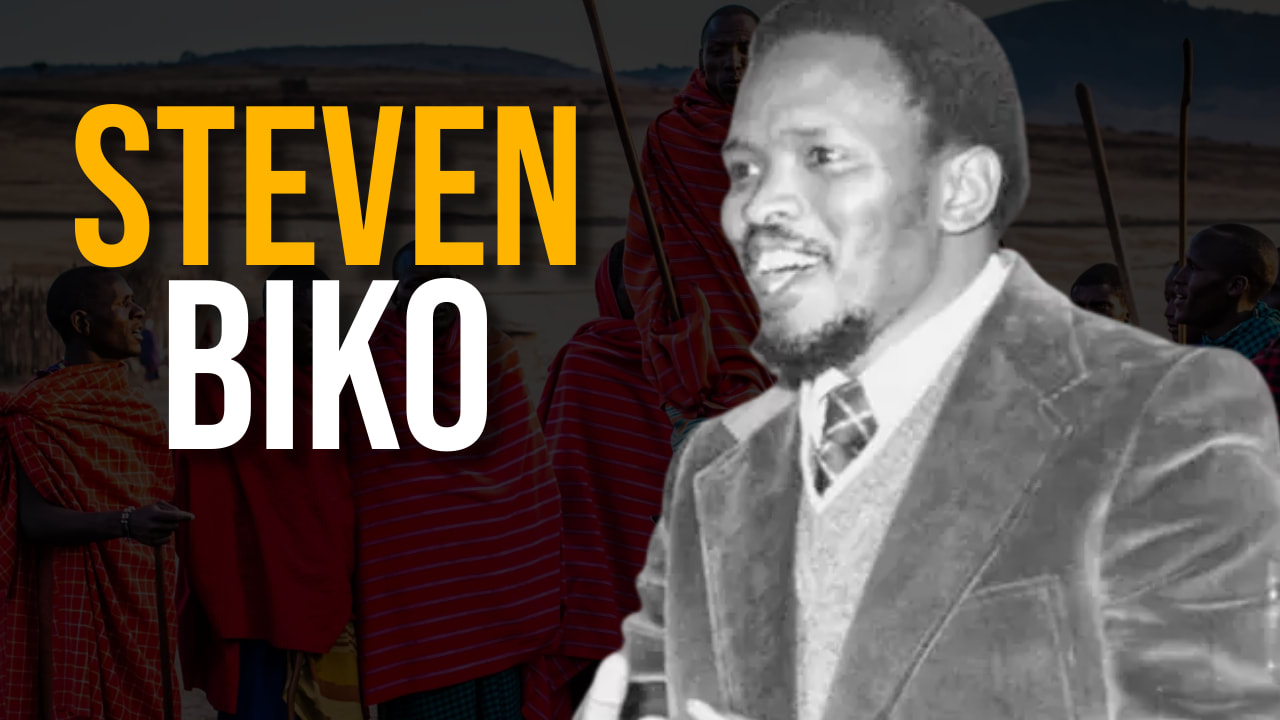



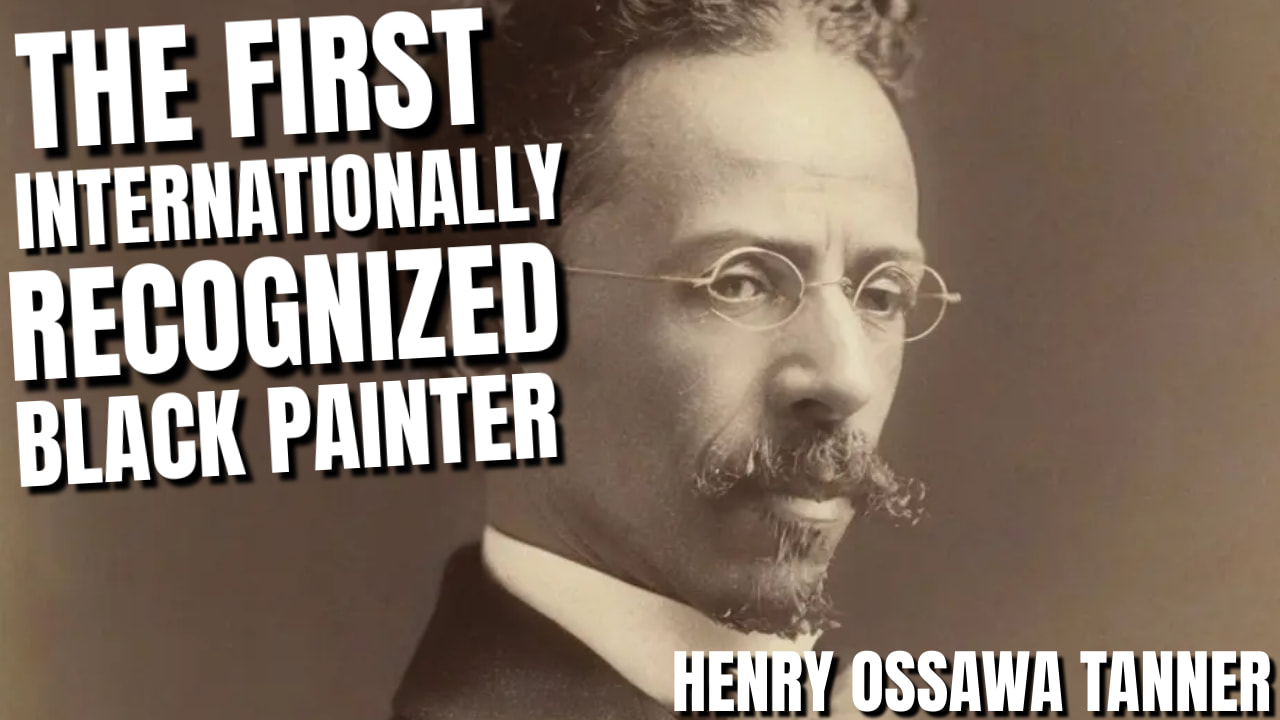
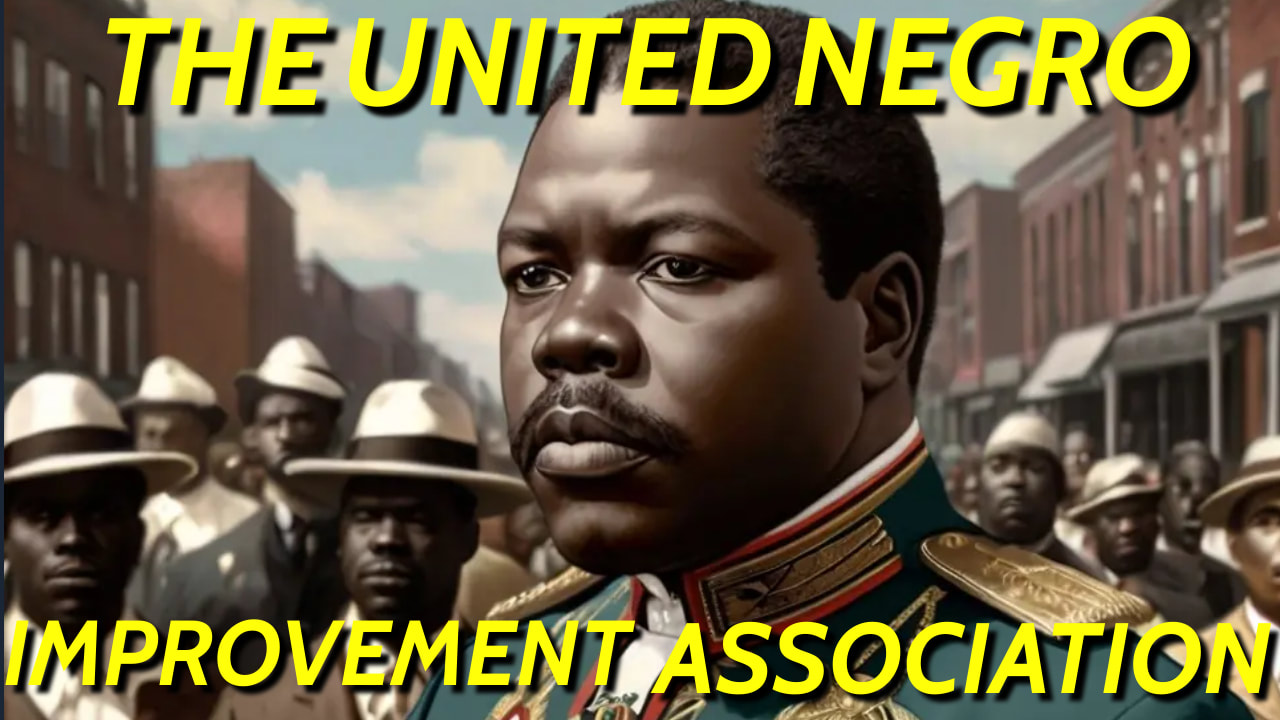
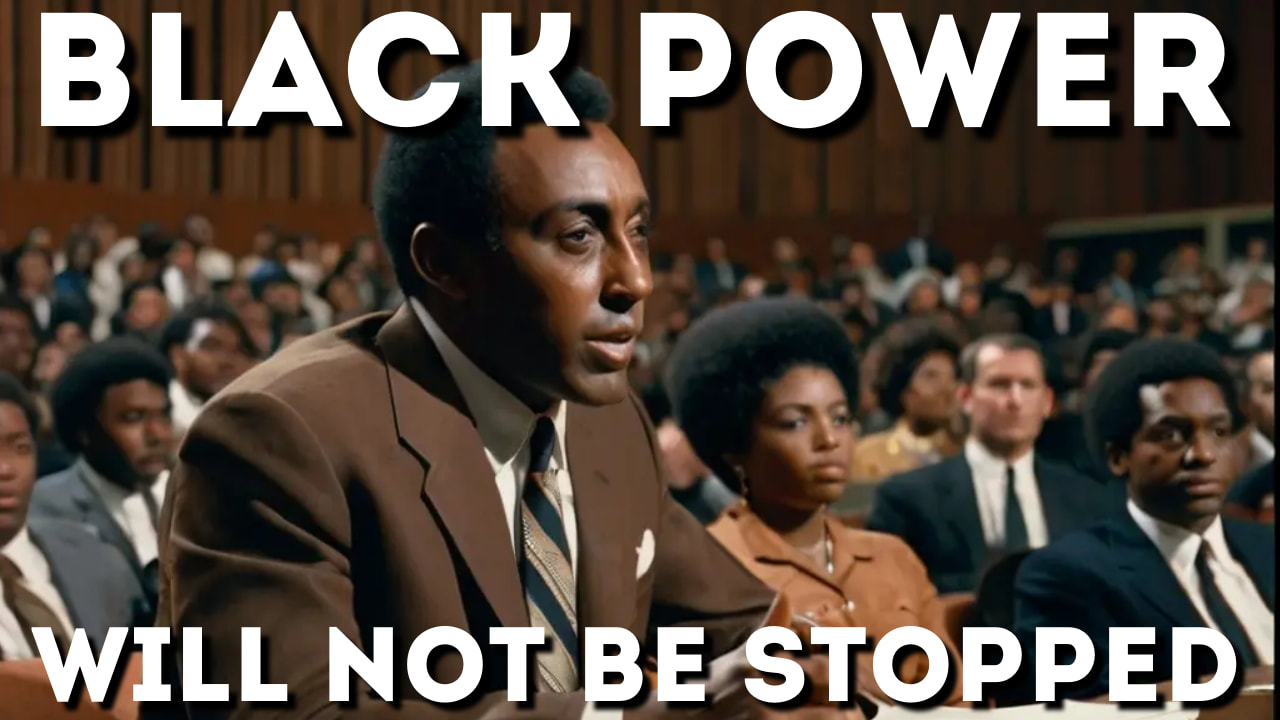
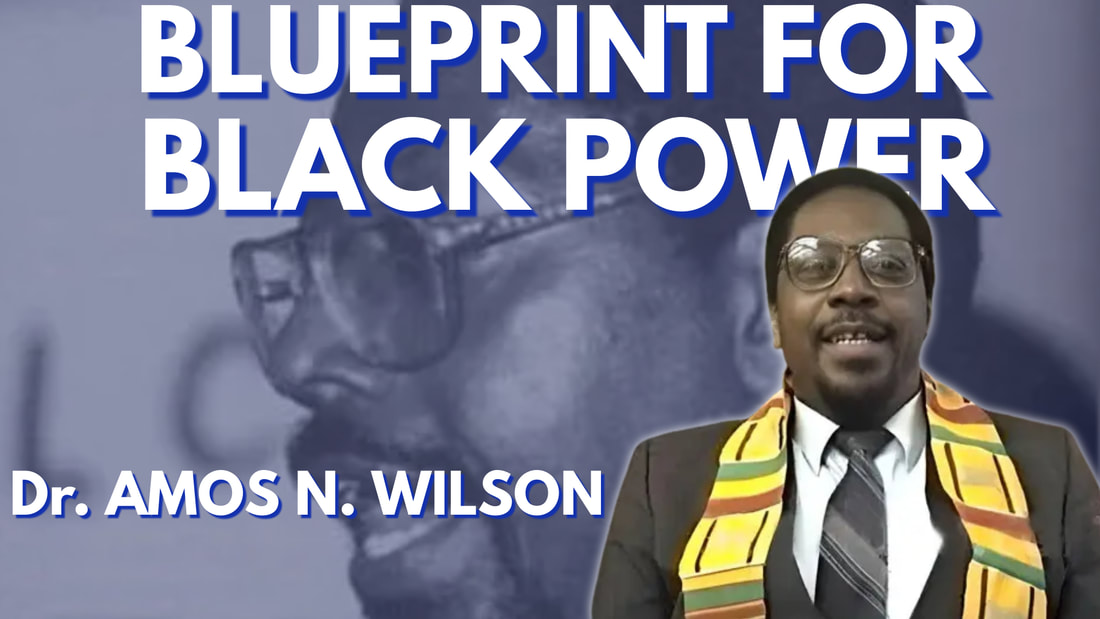
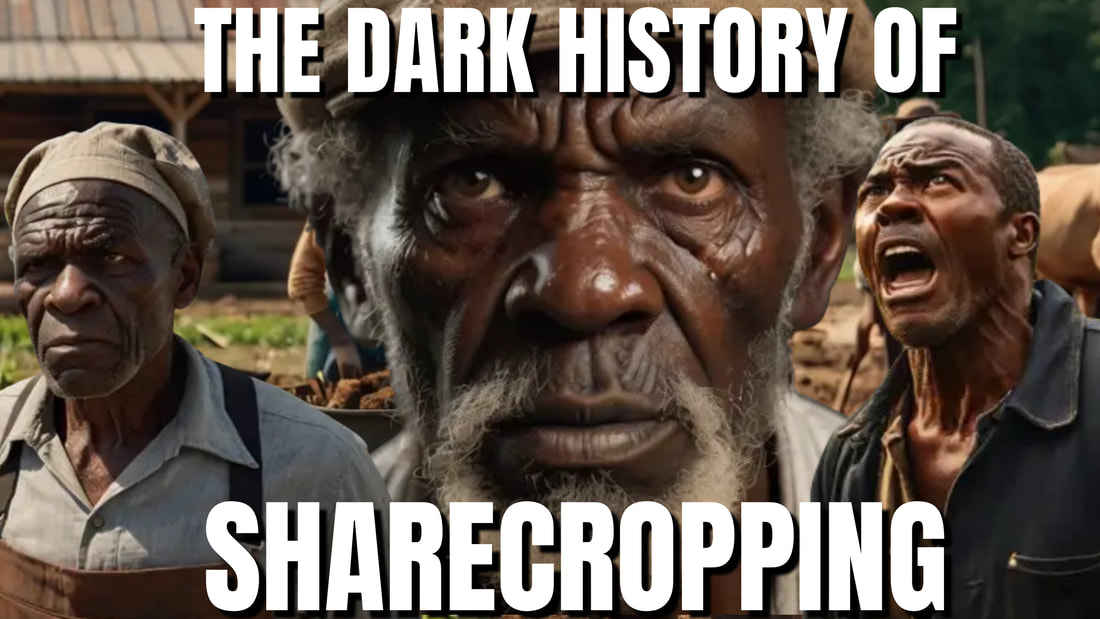
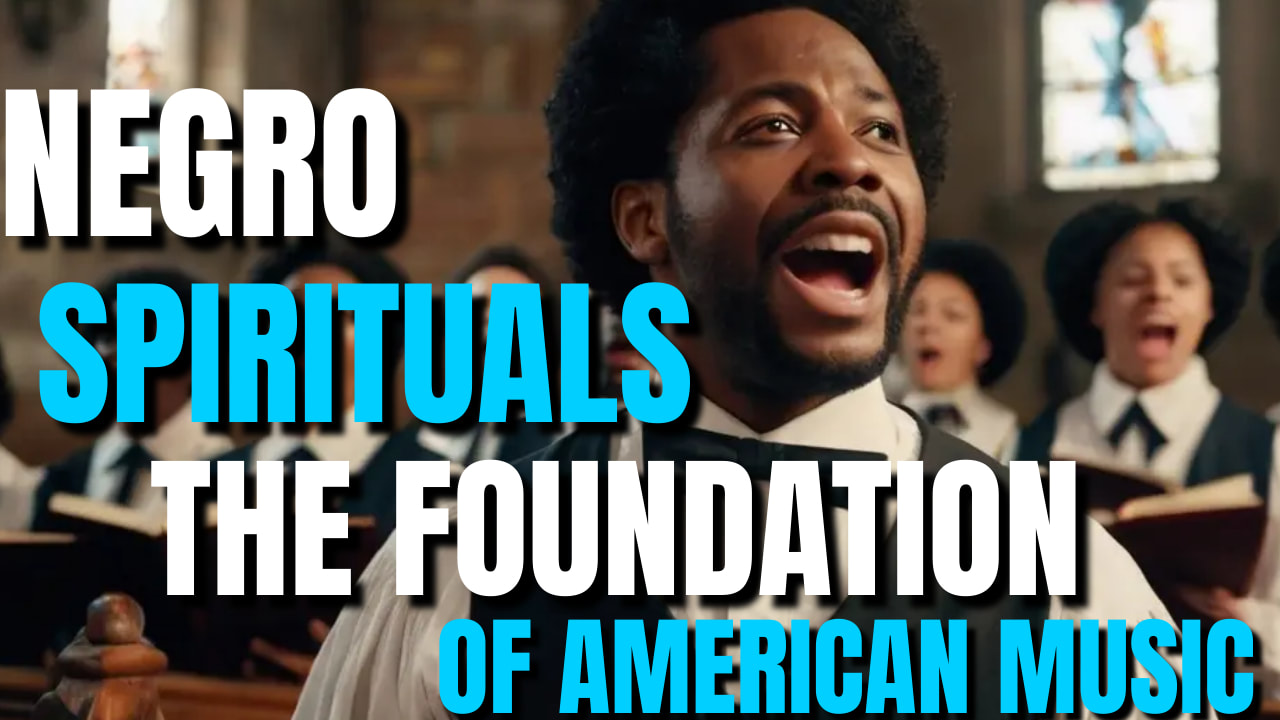
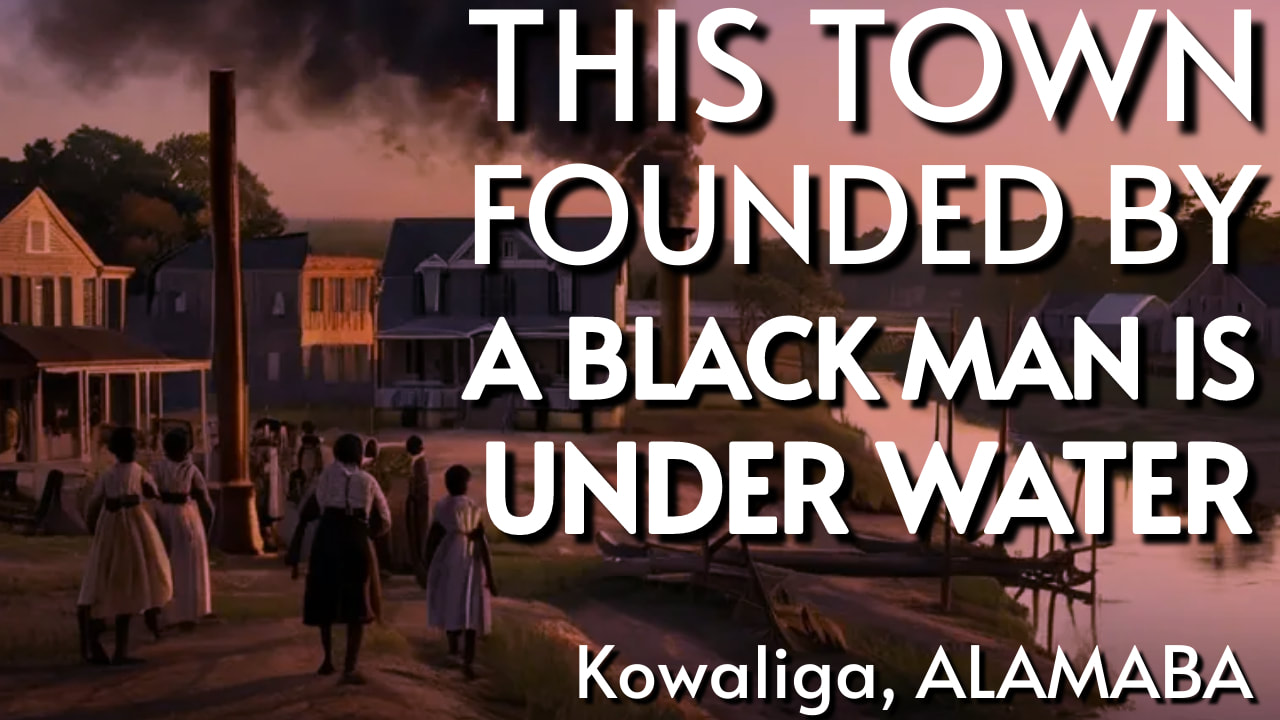


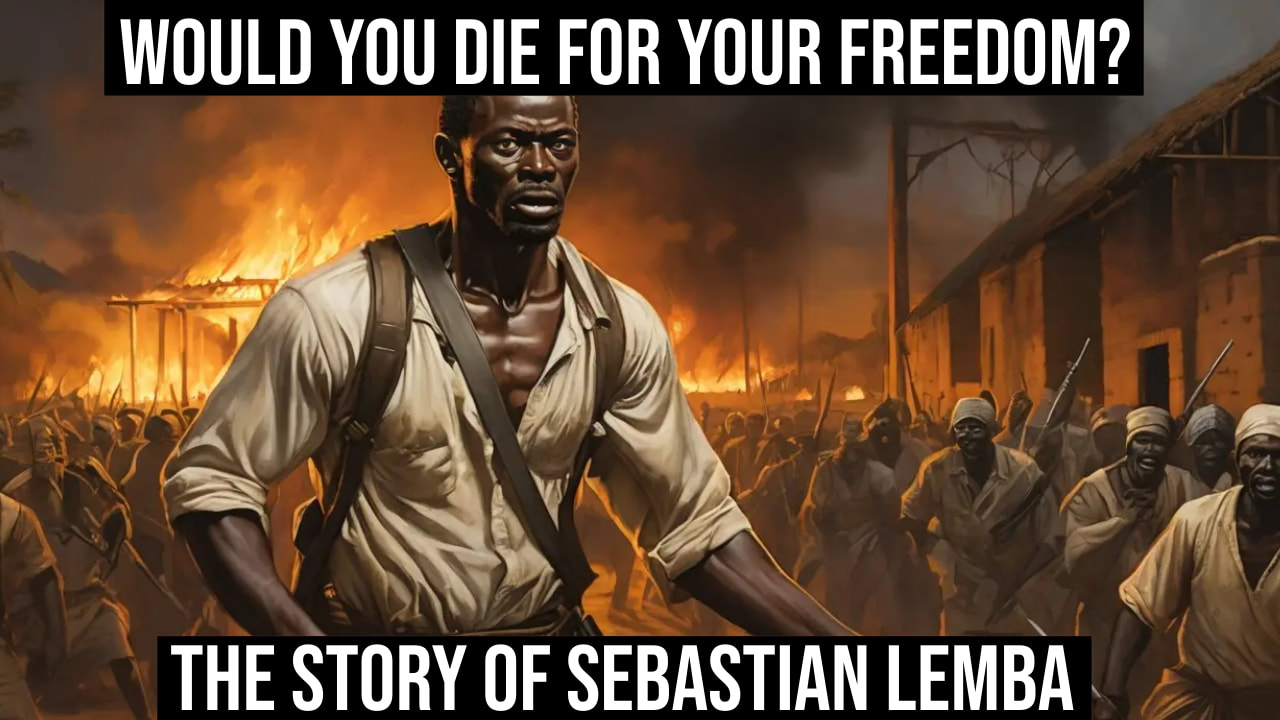
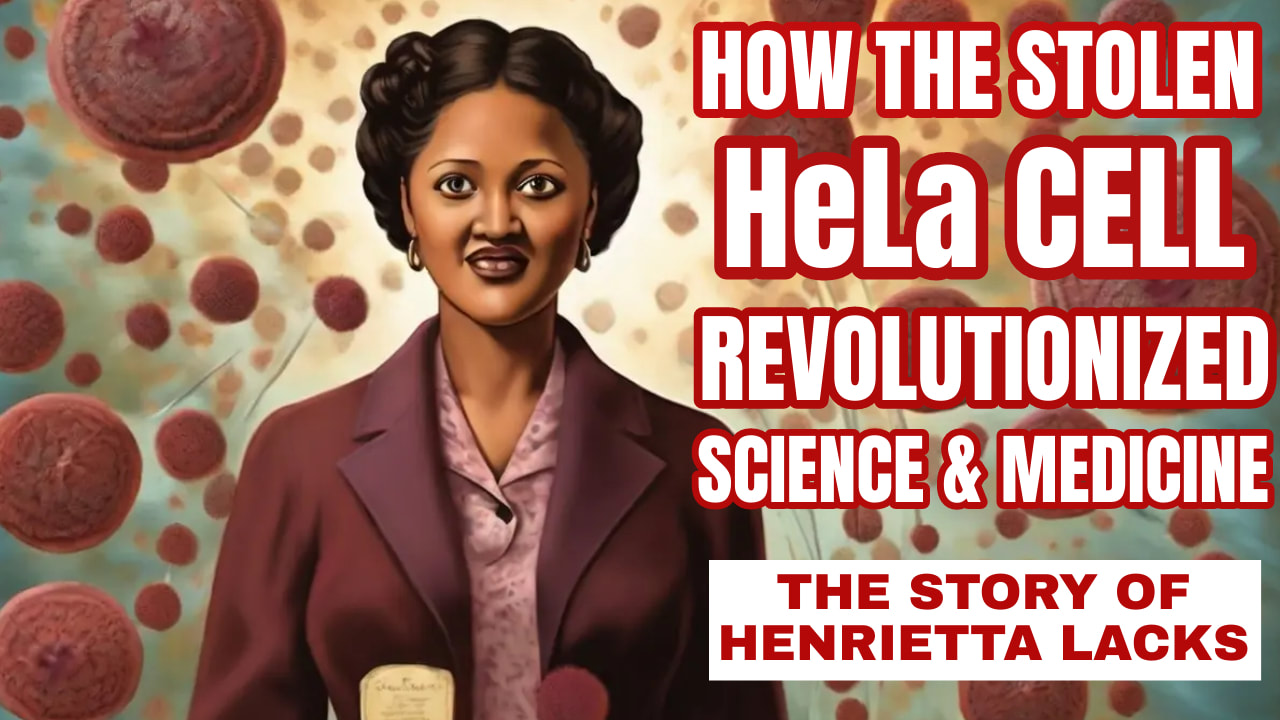

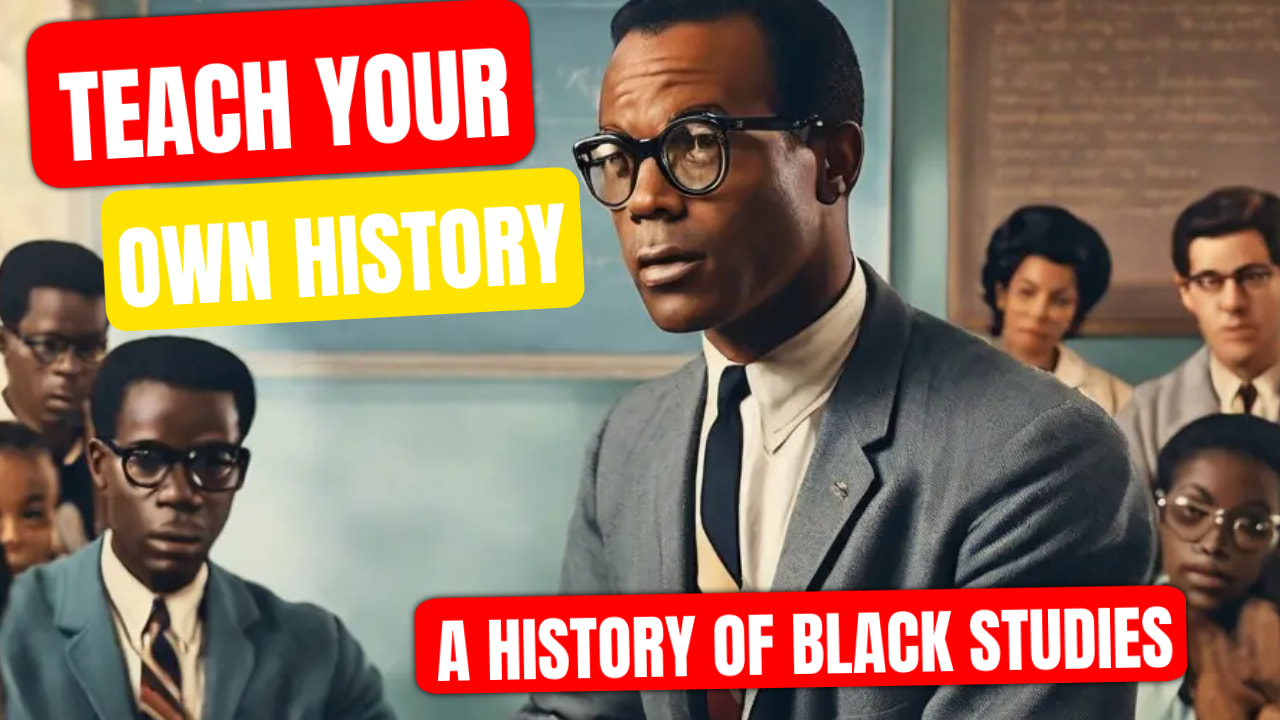

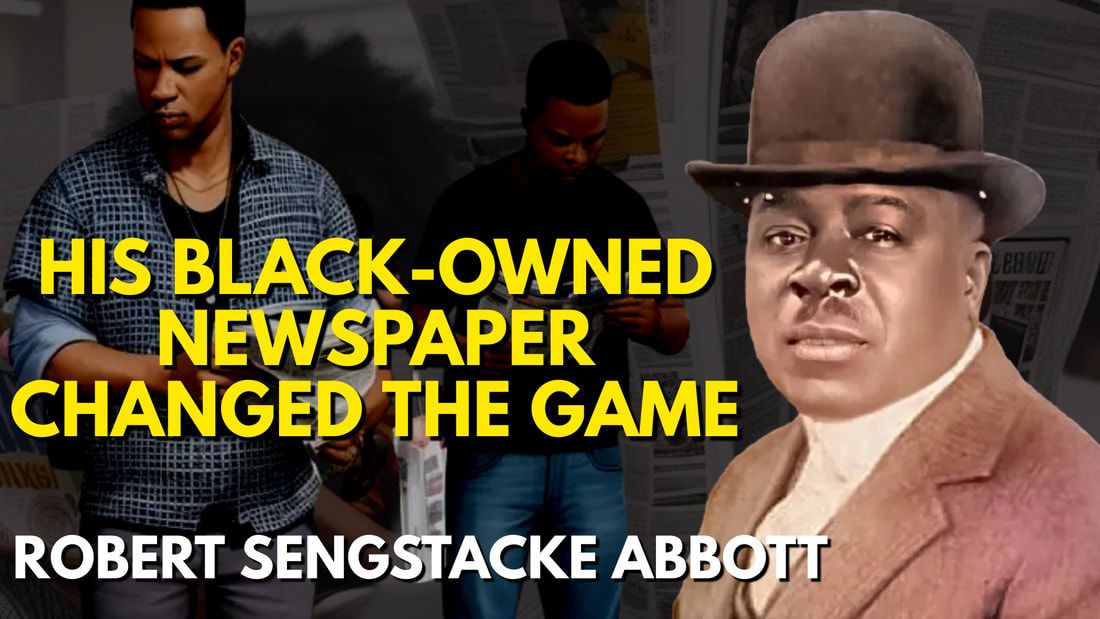
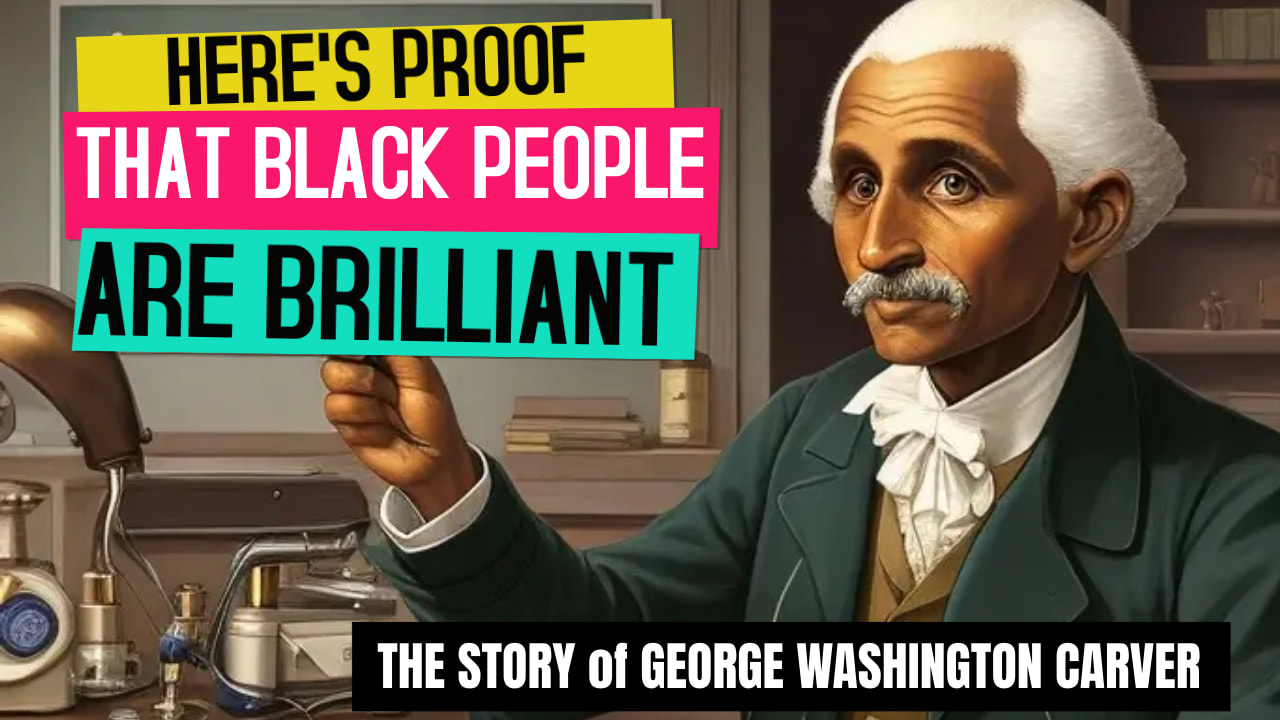


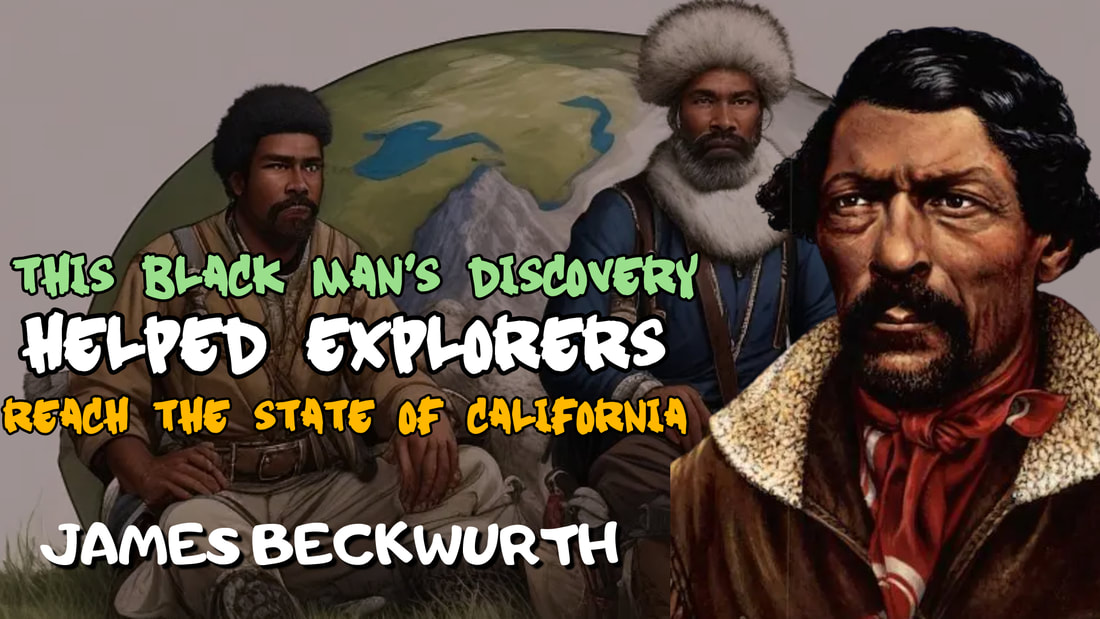
 RSS Feed
RSS Feed
